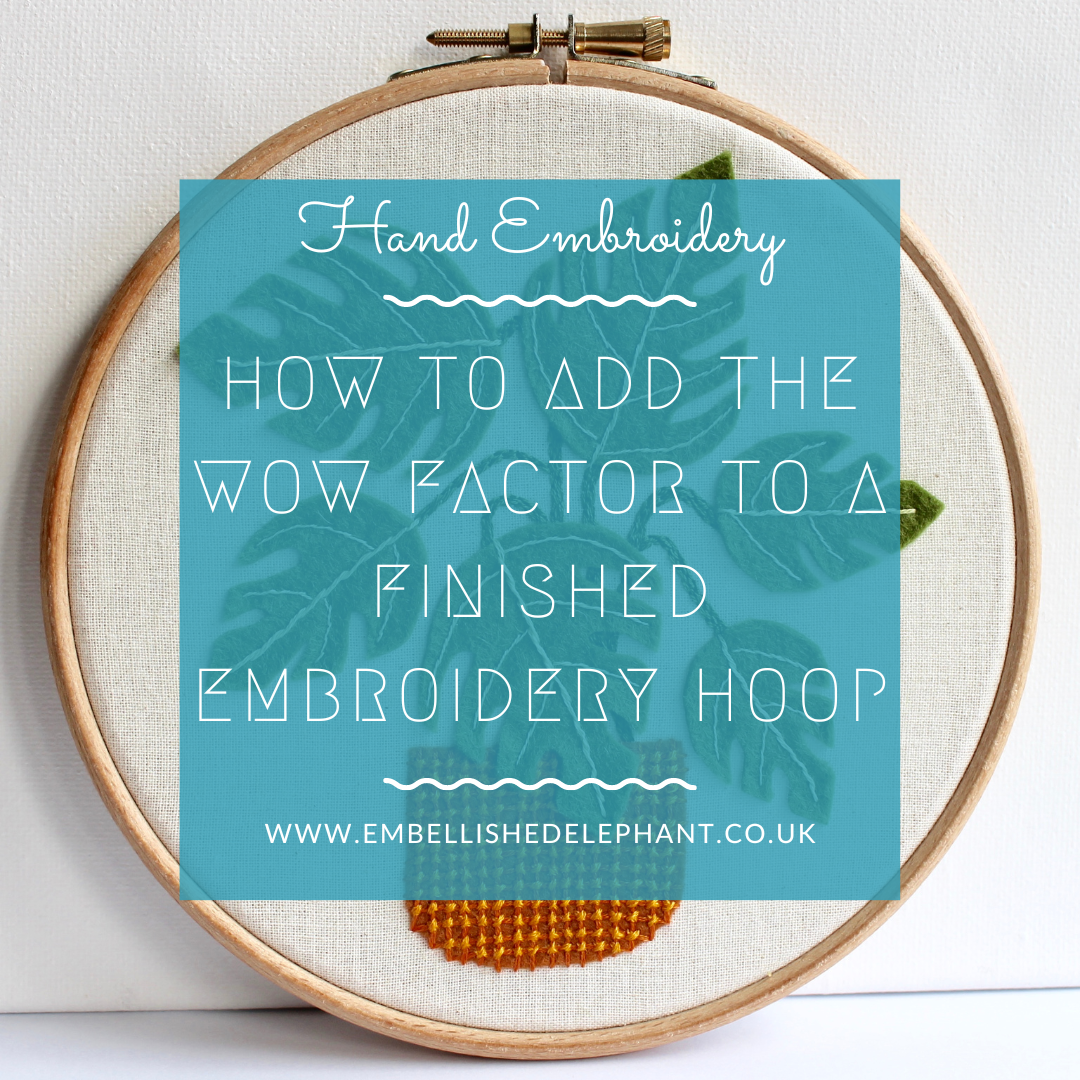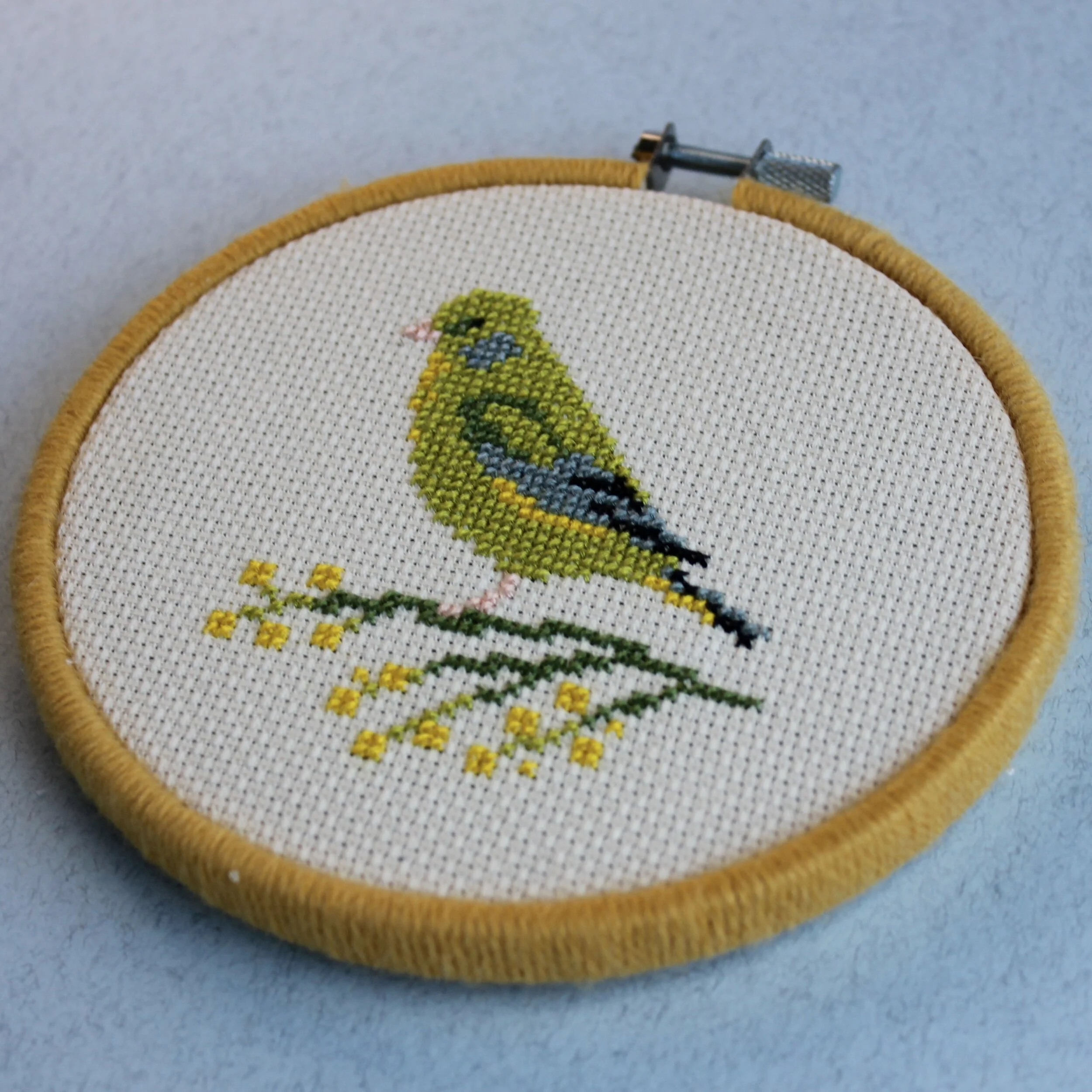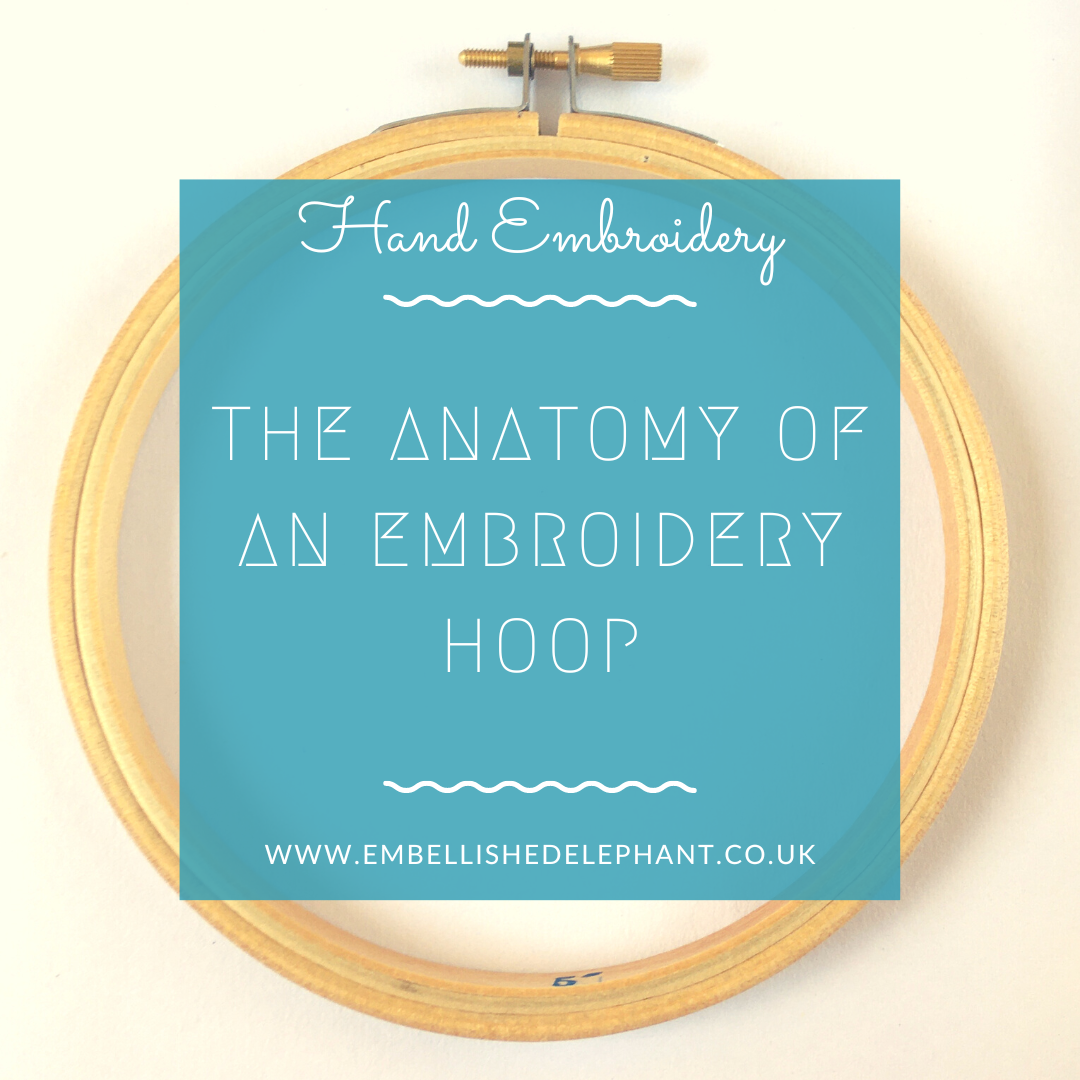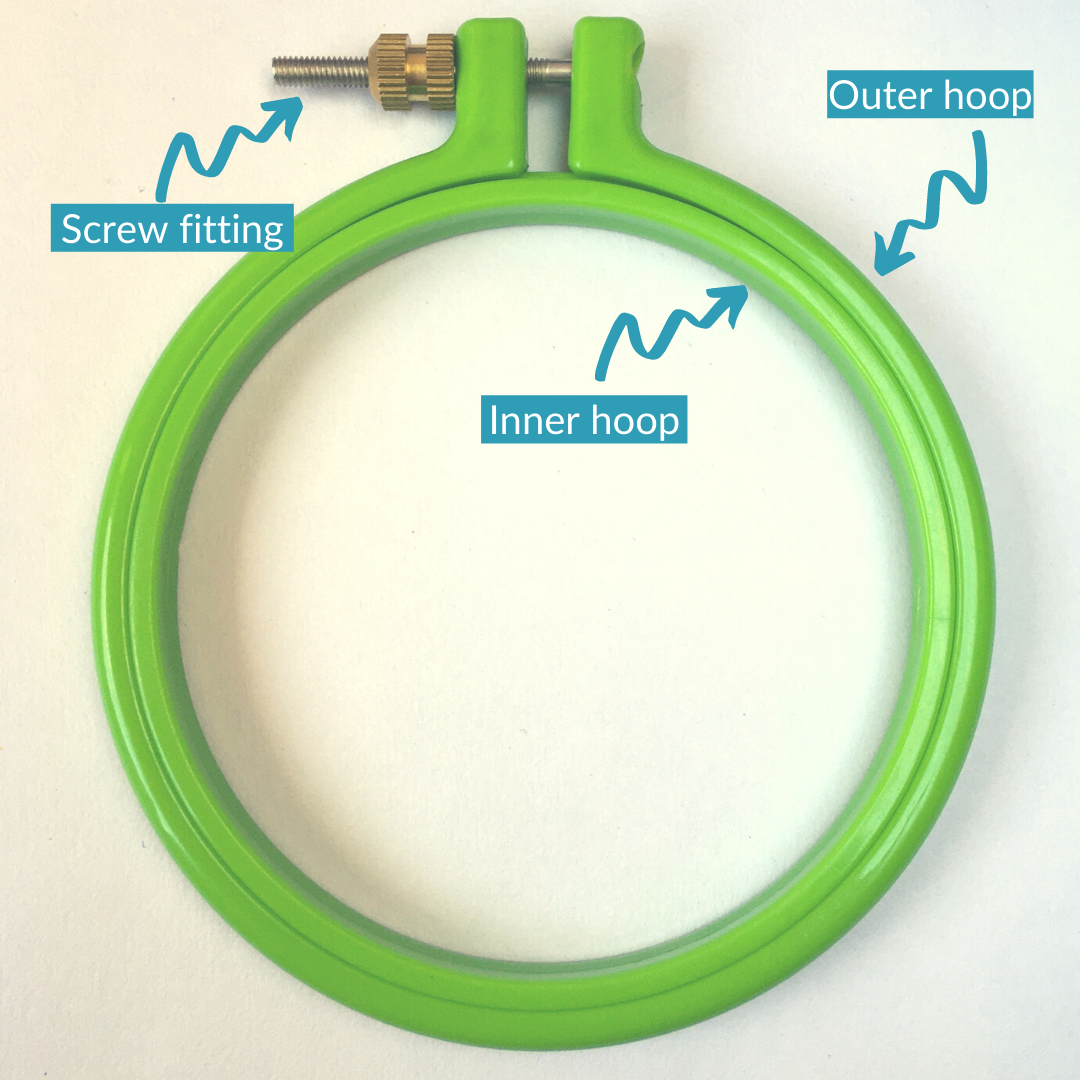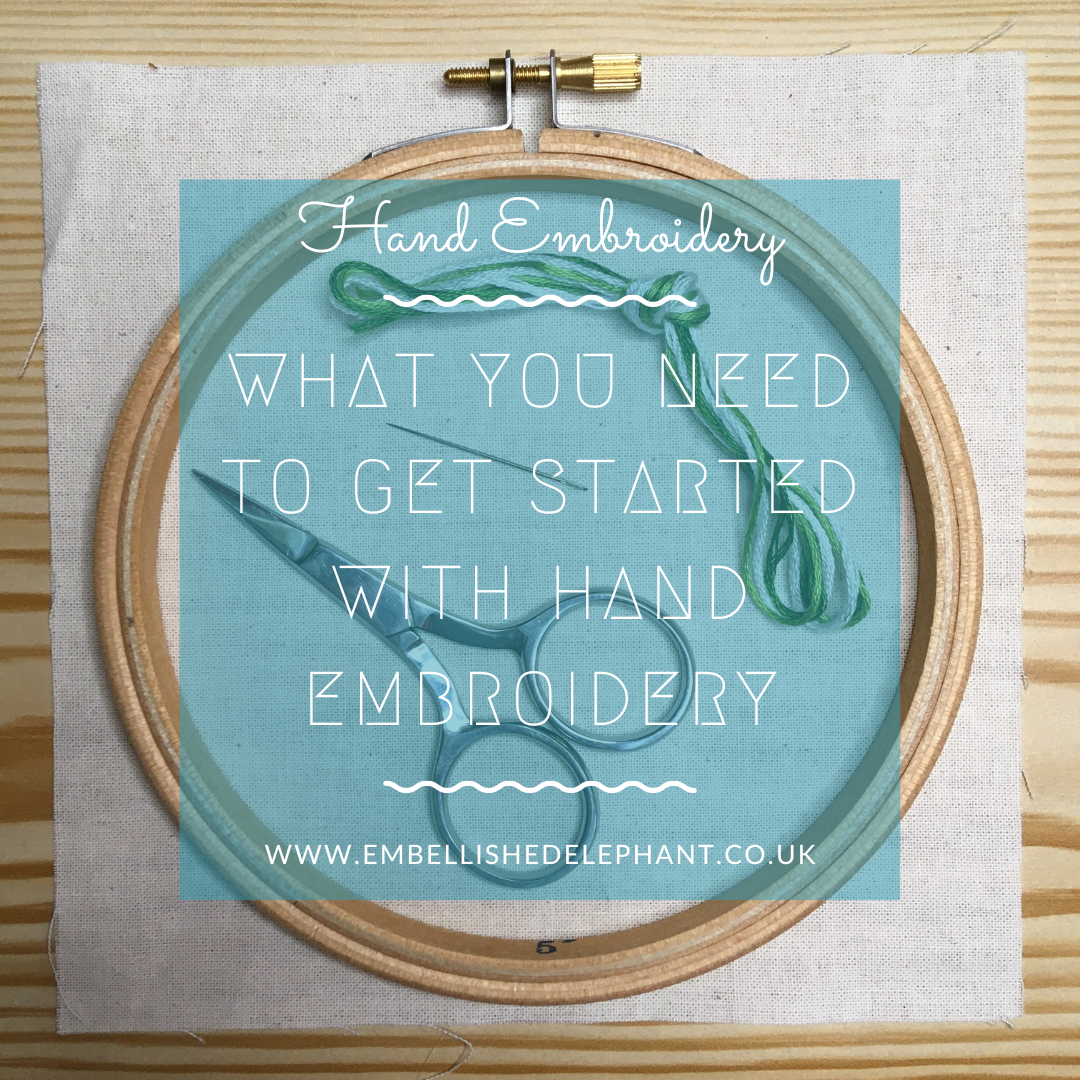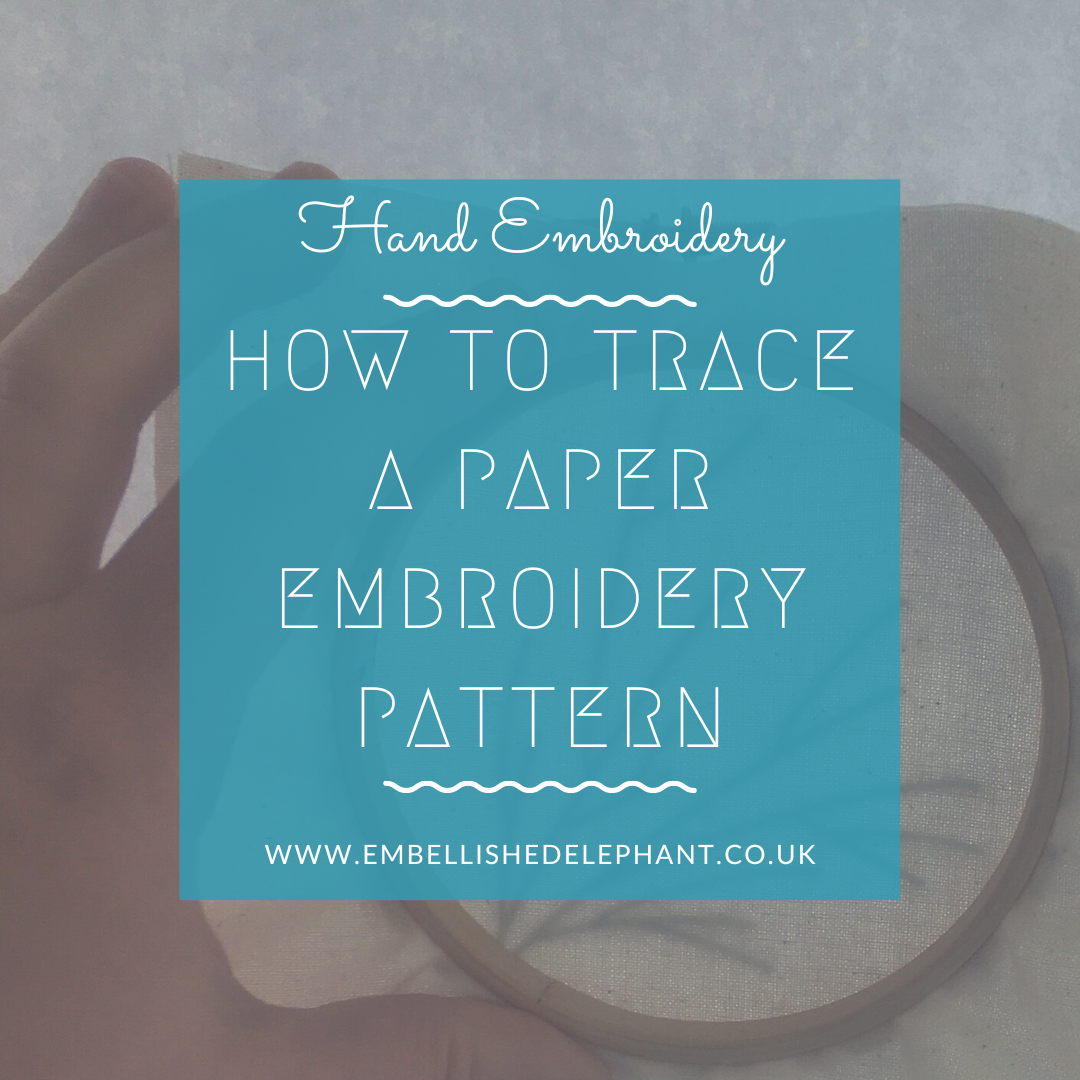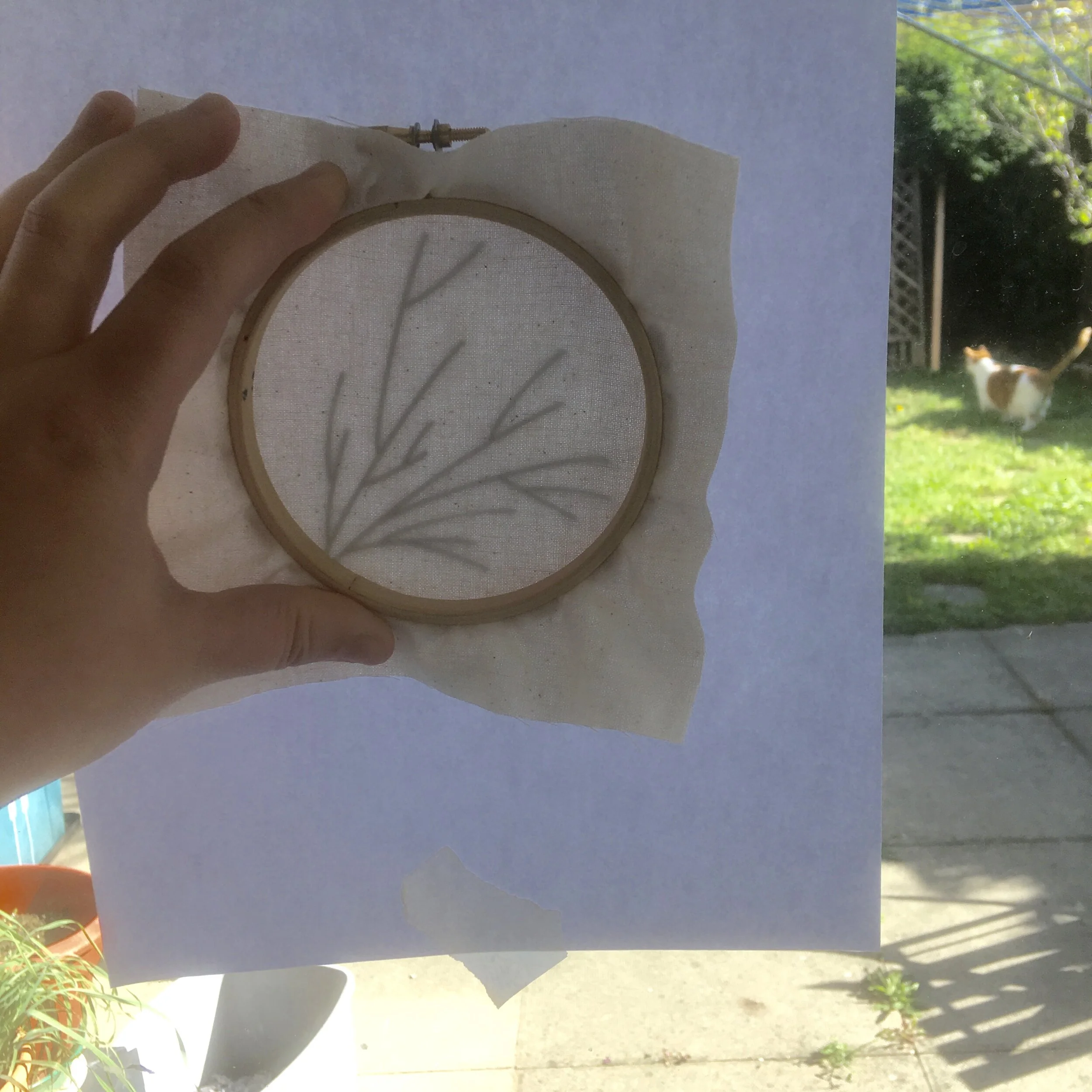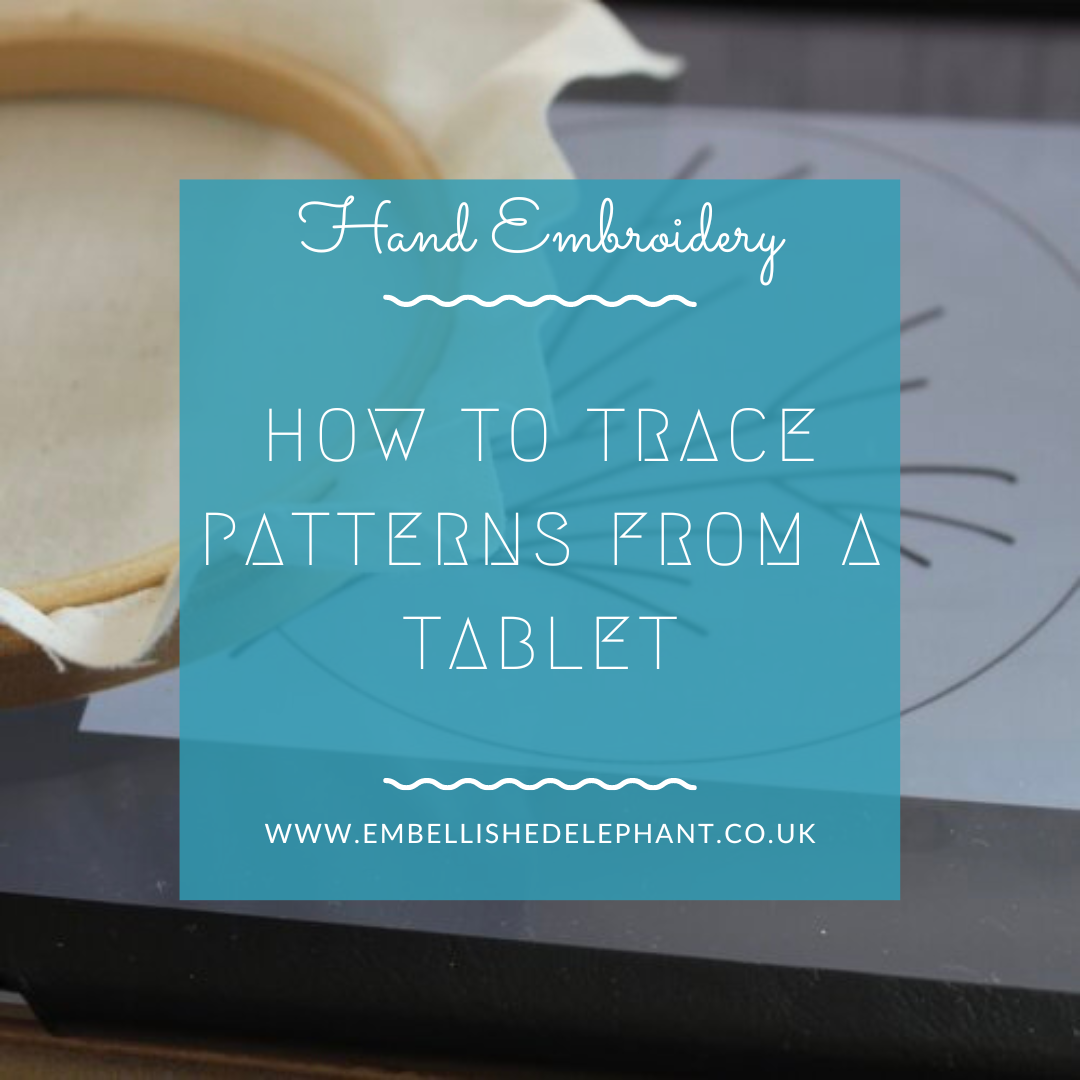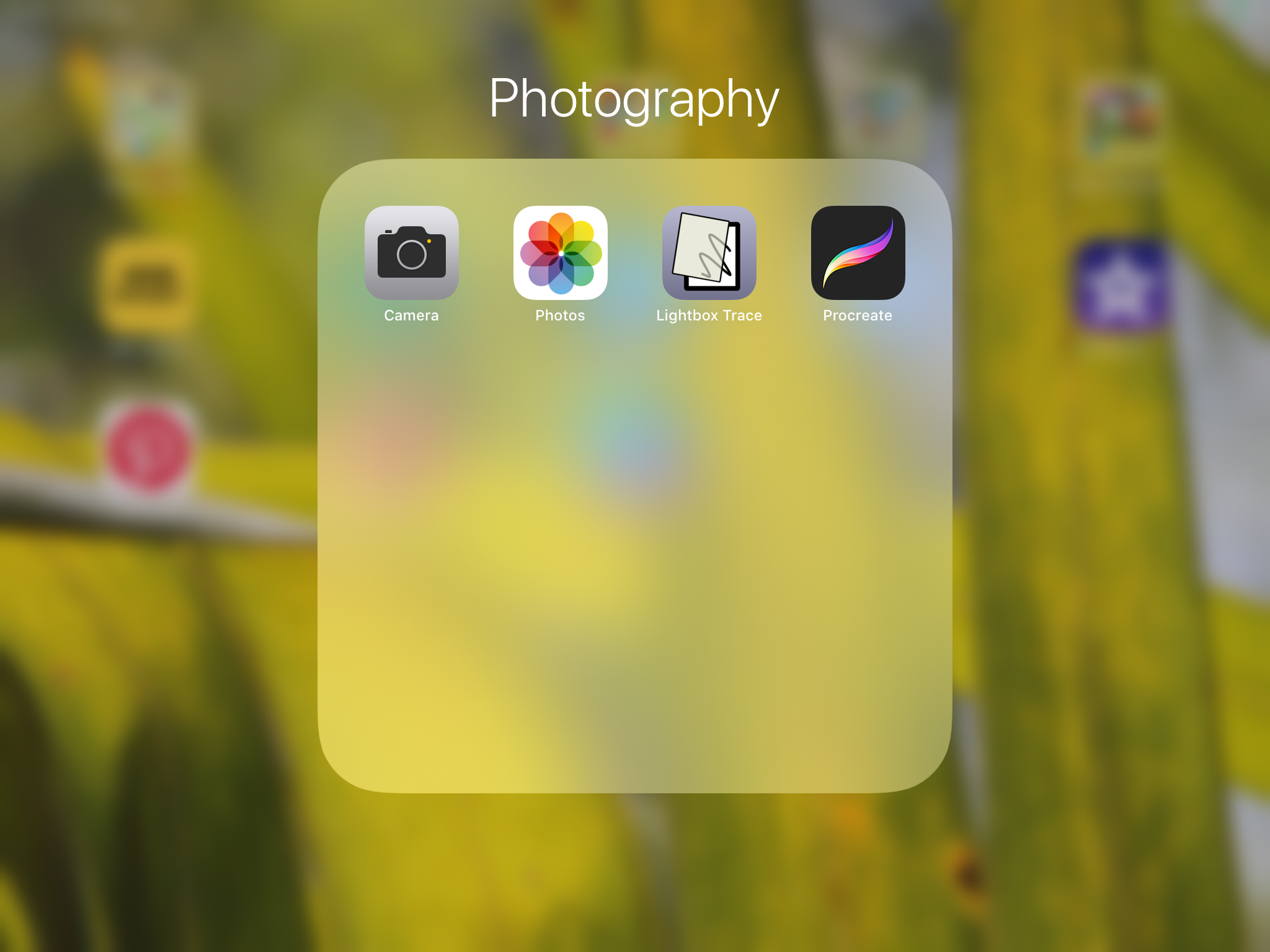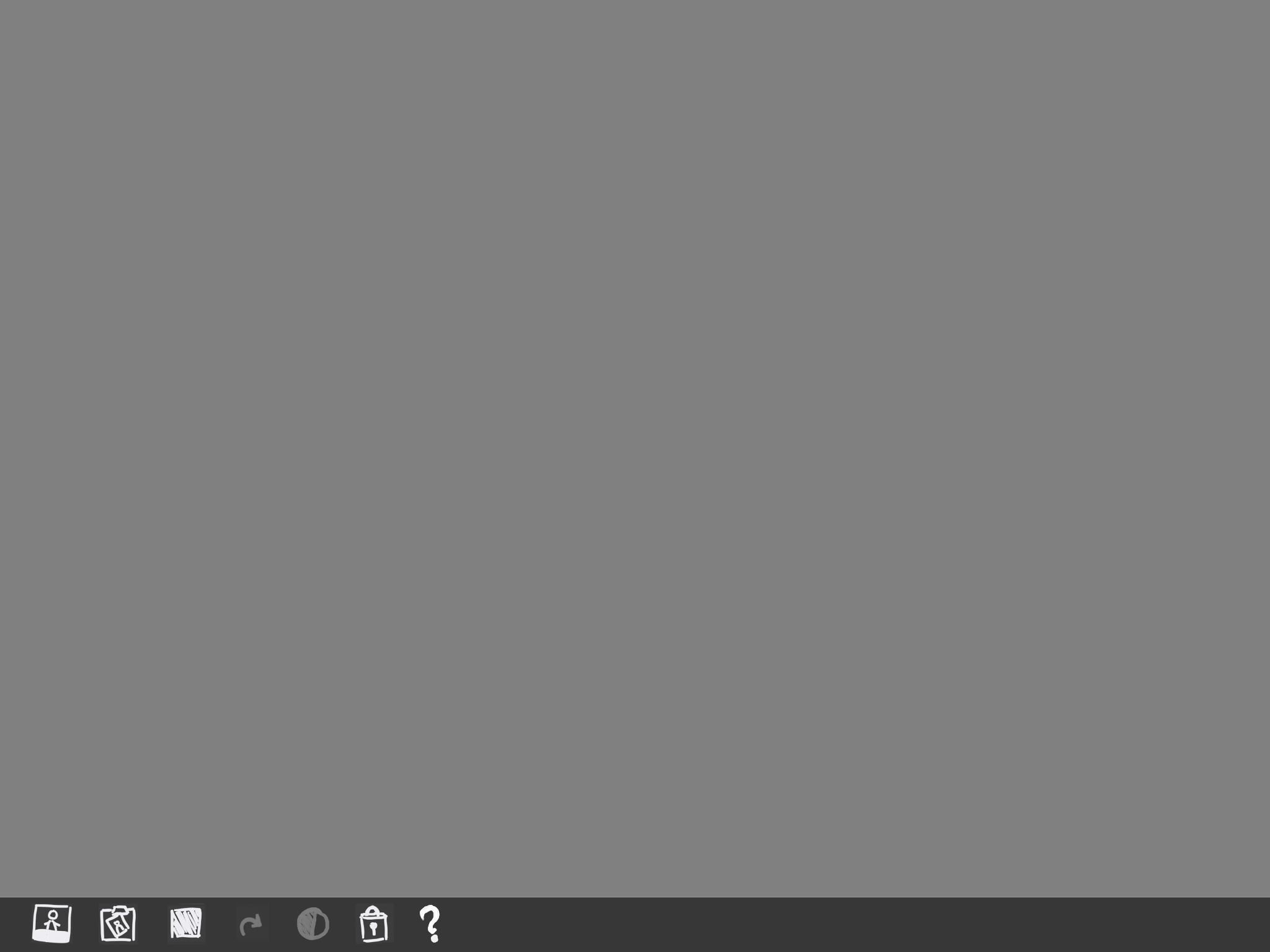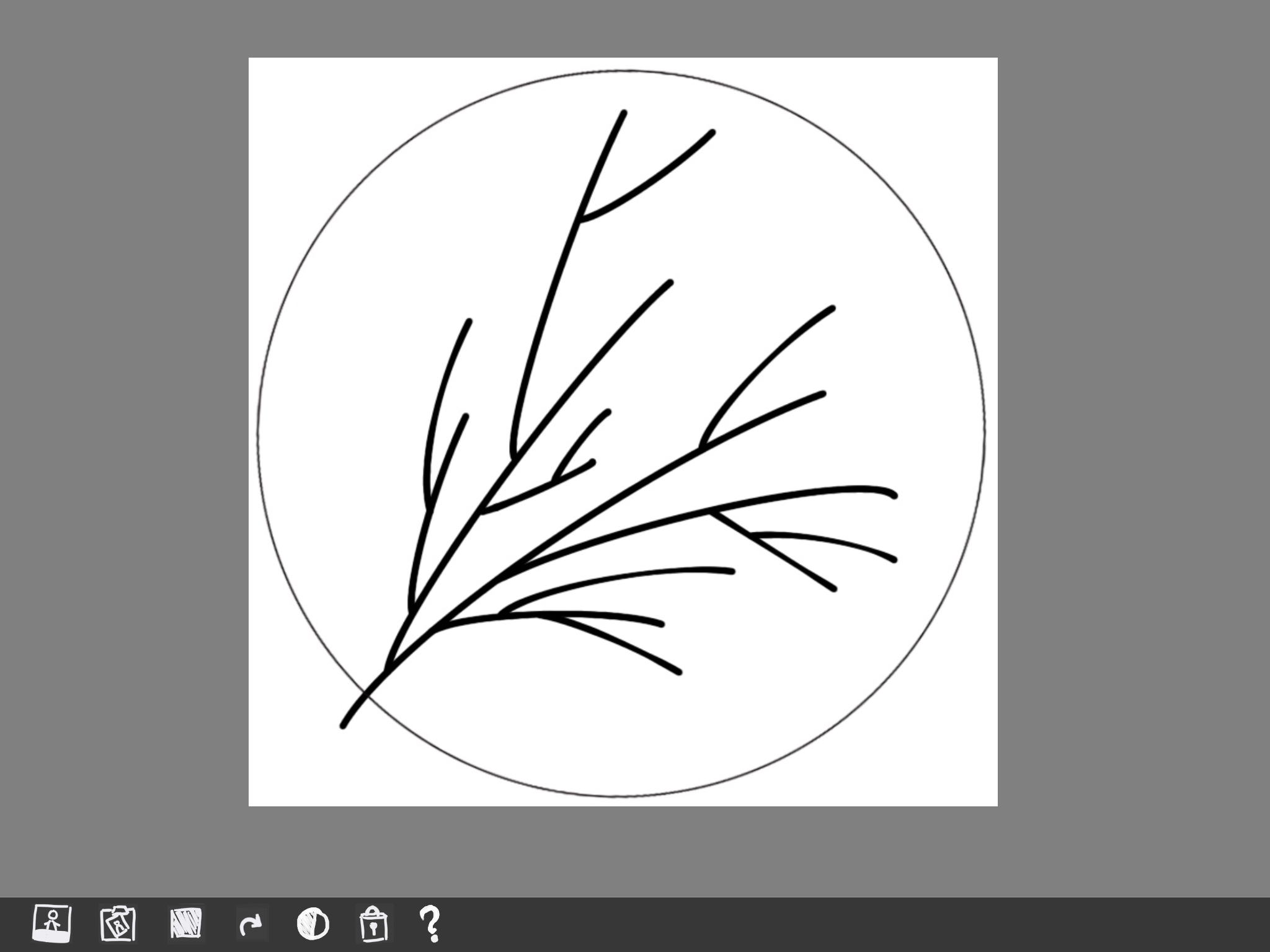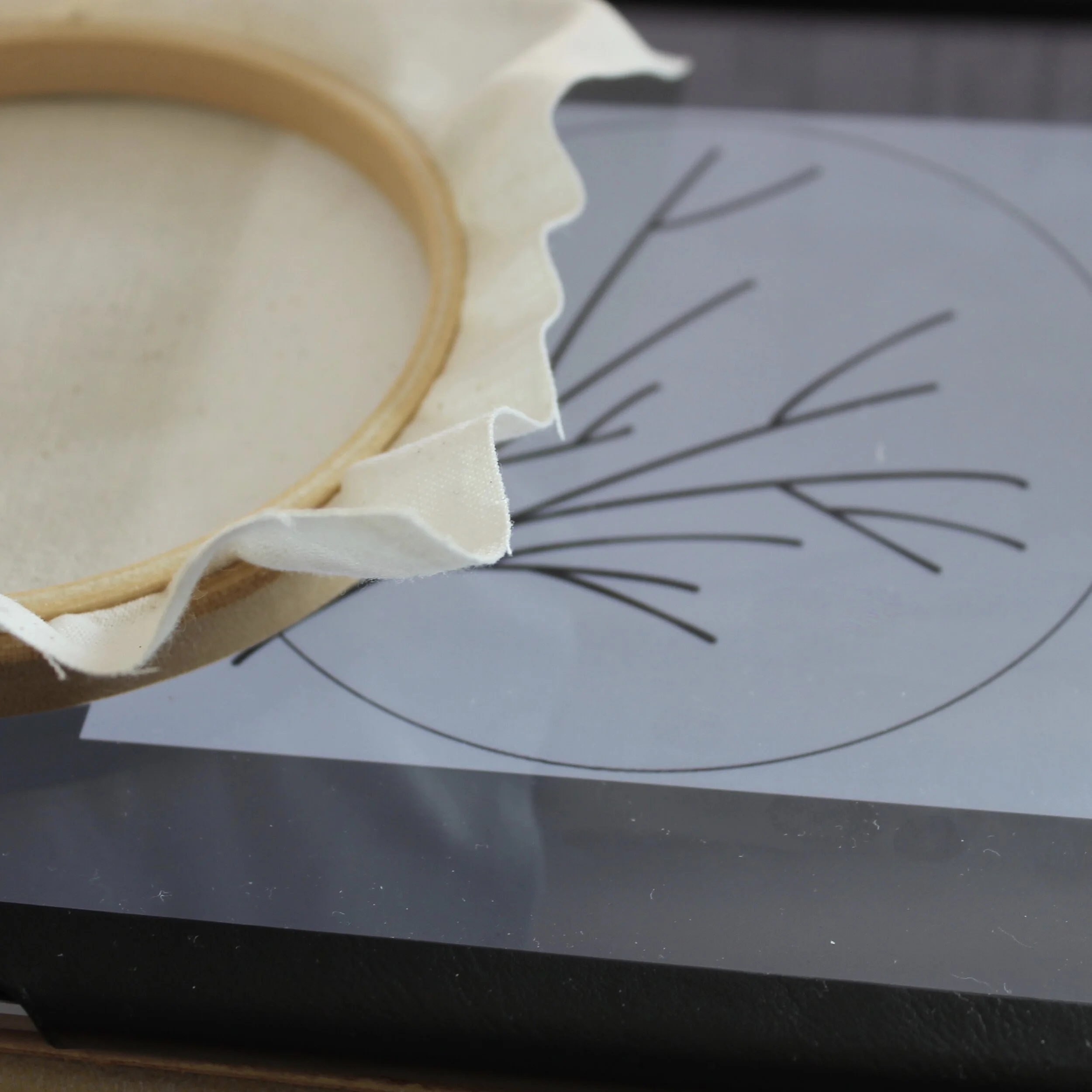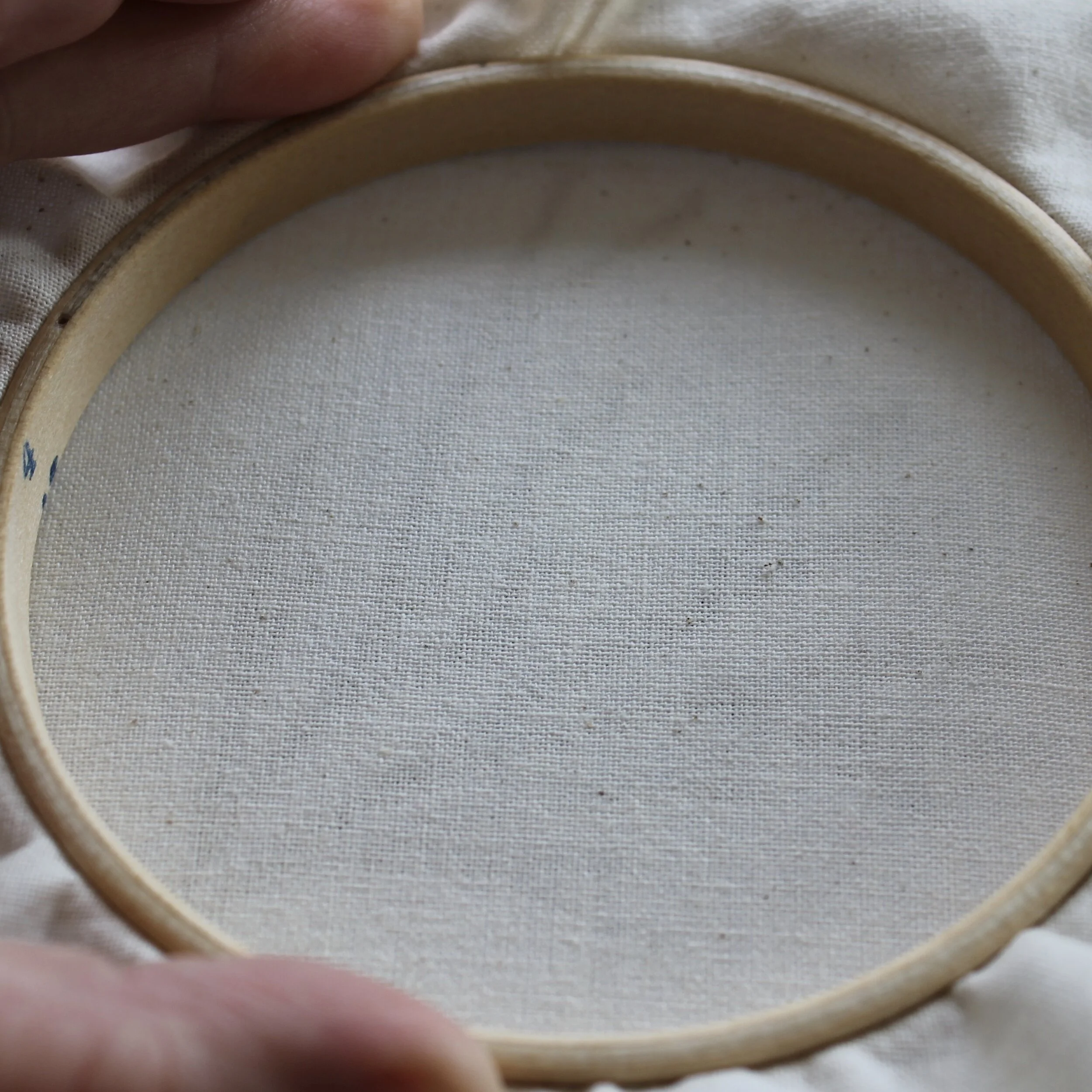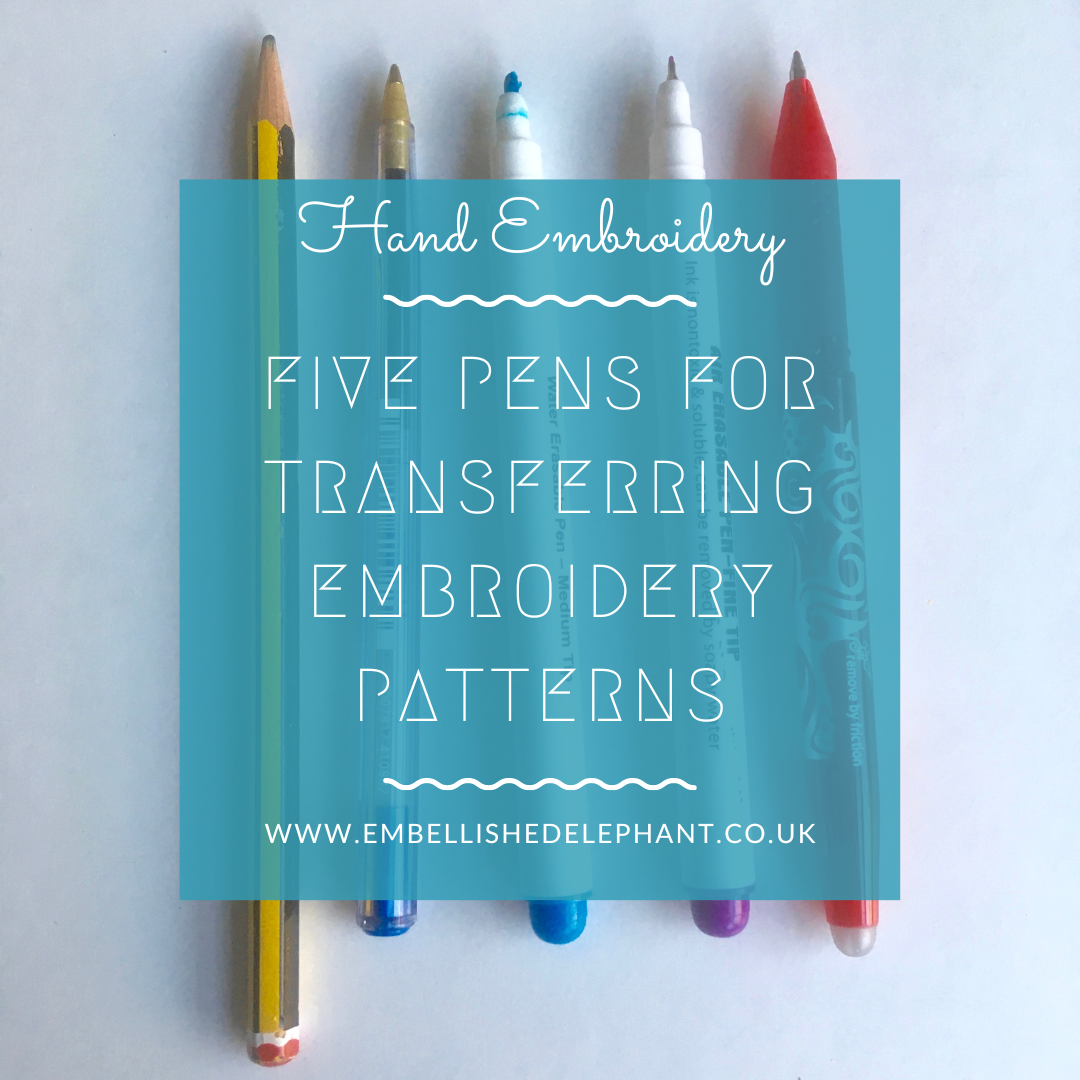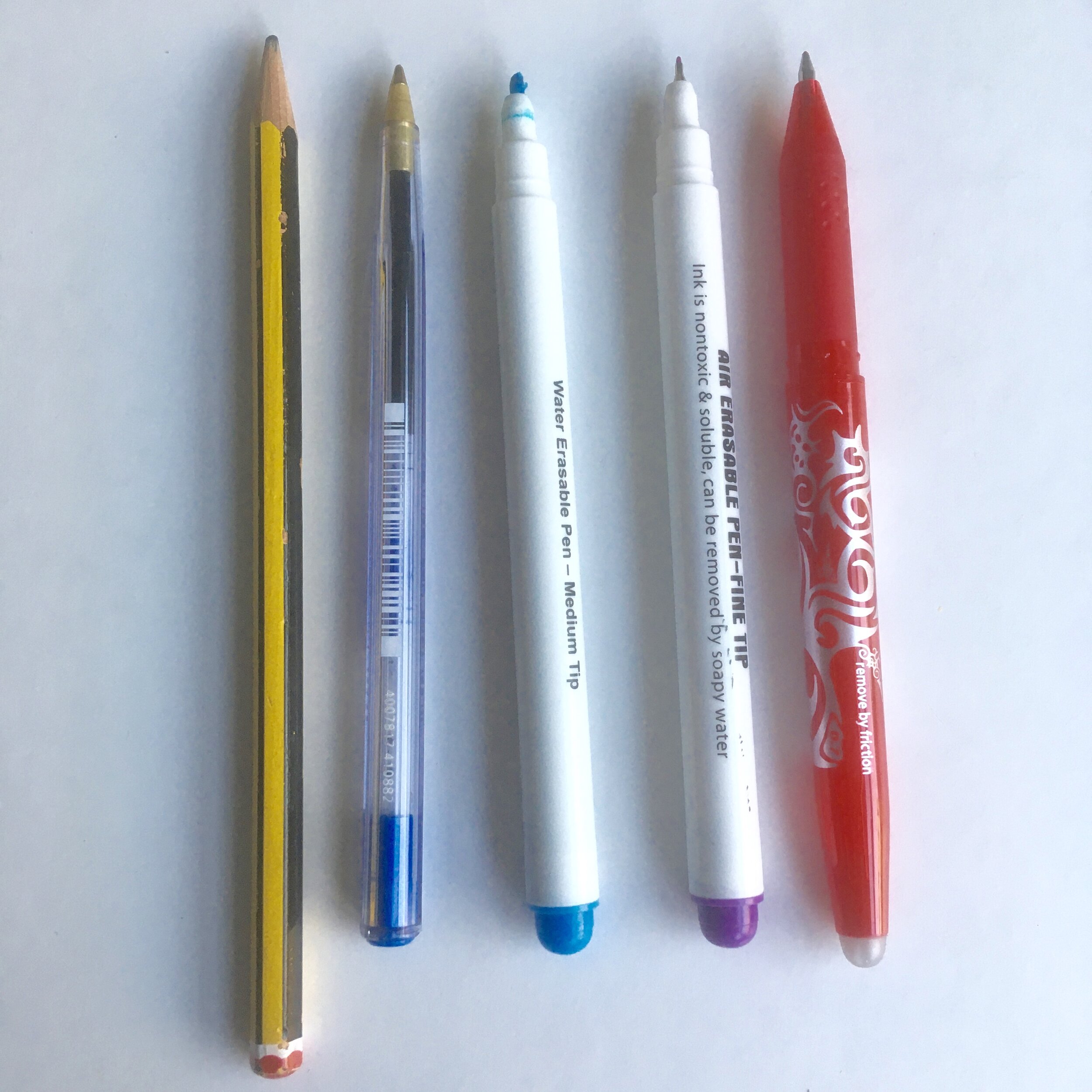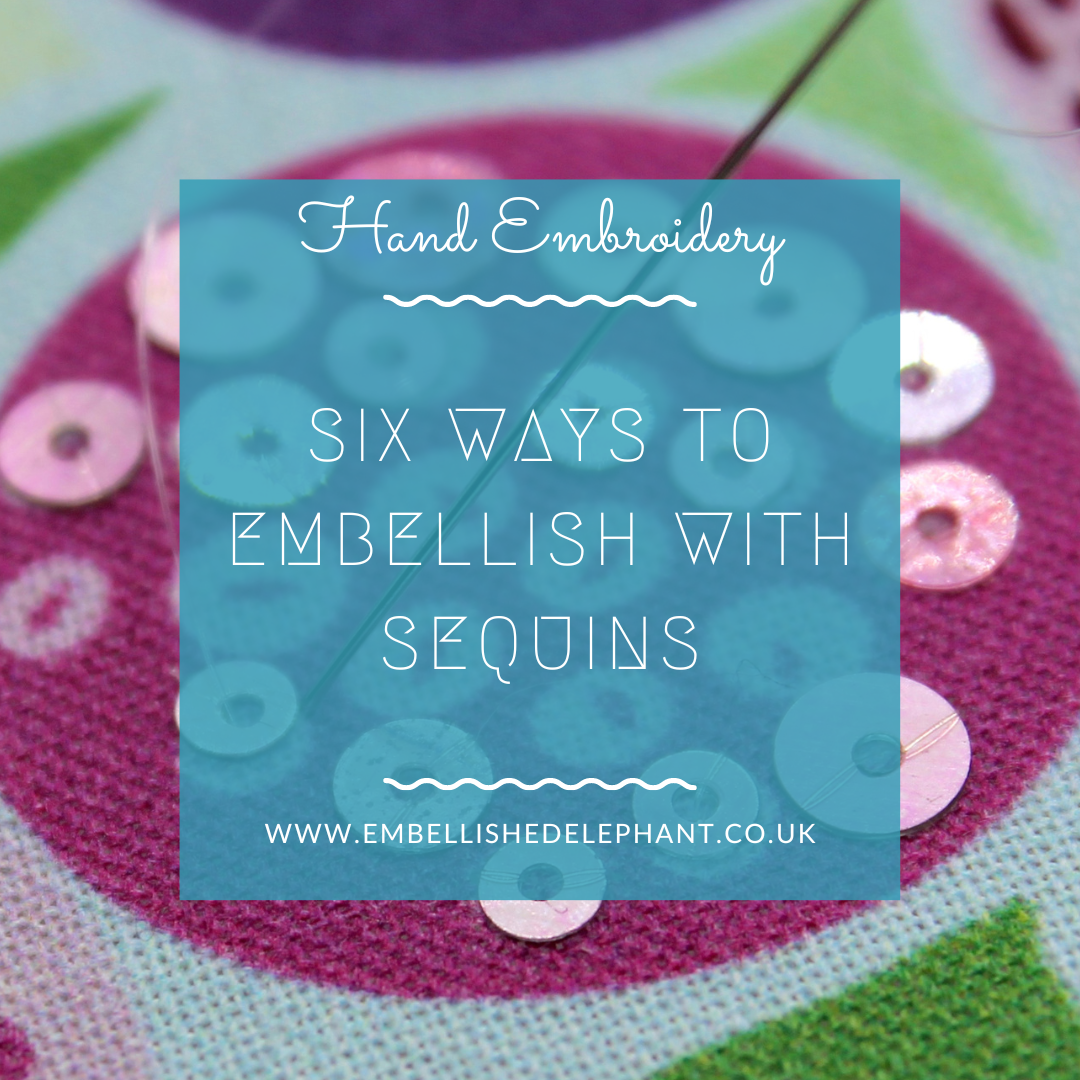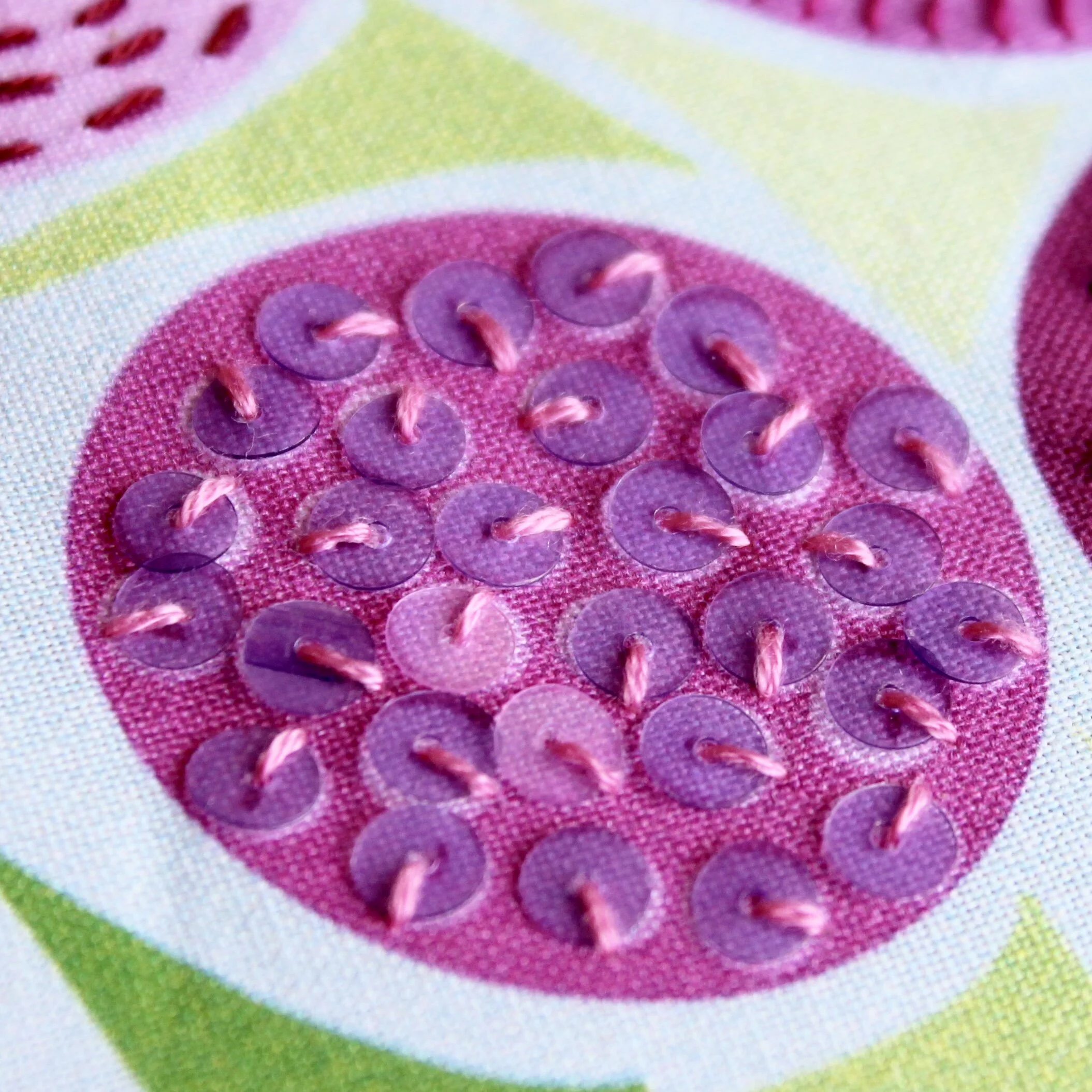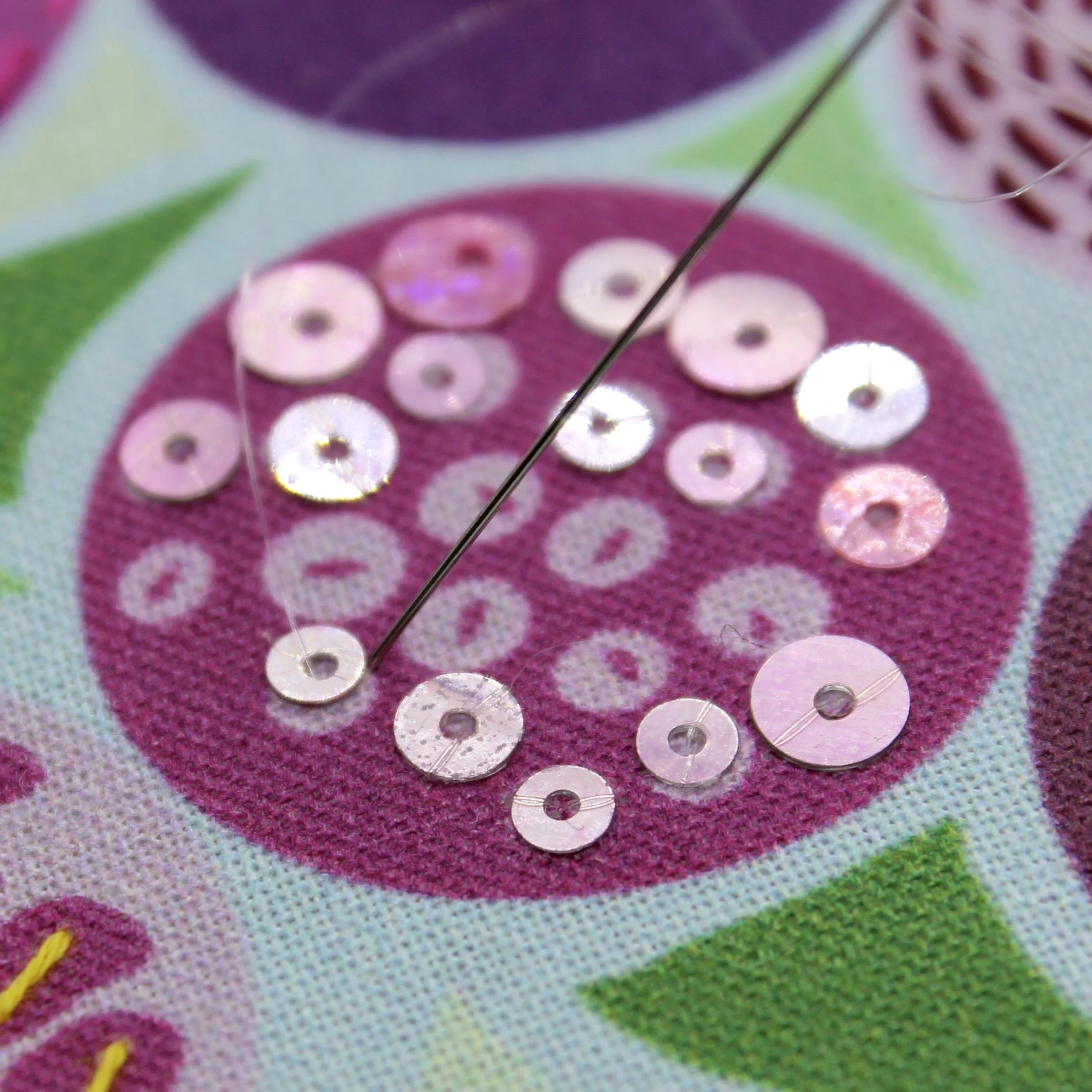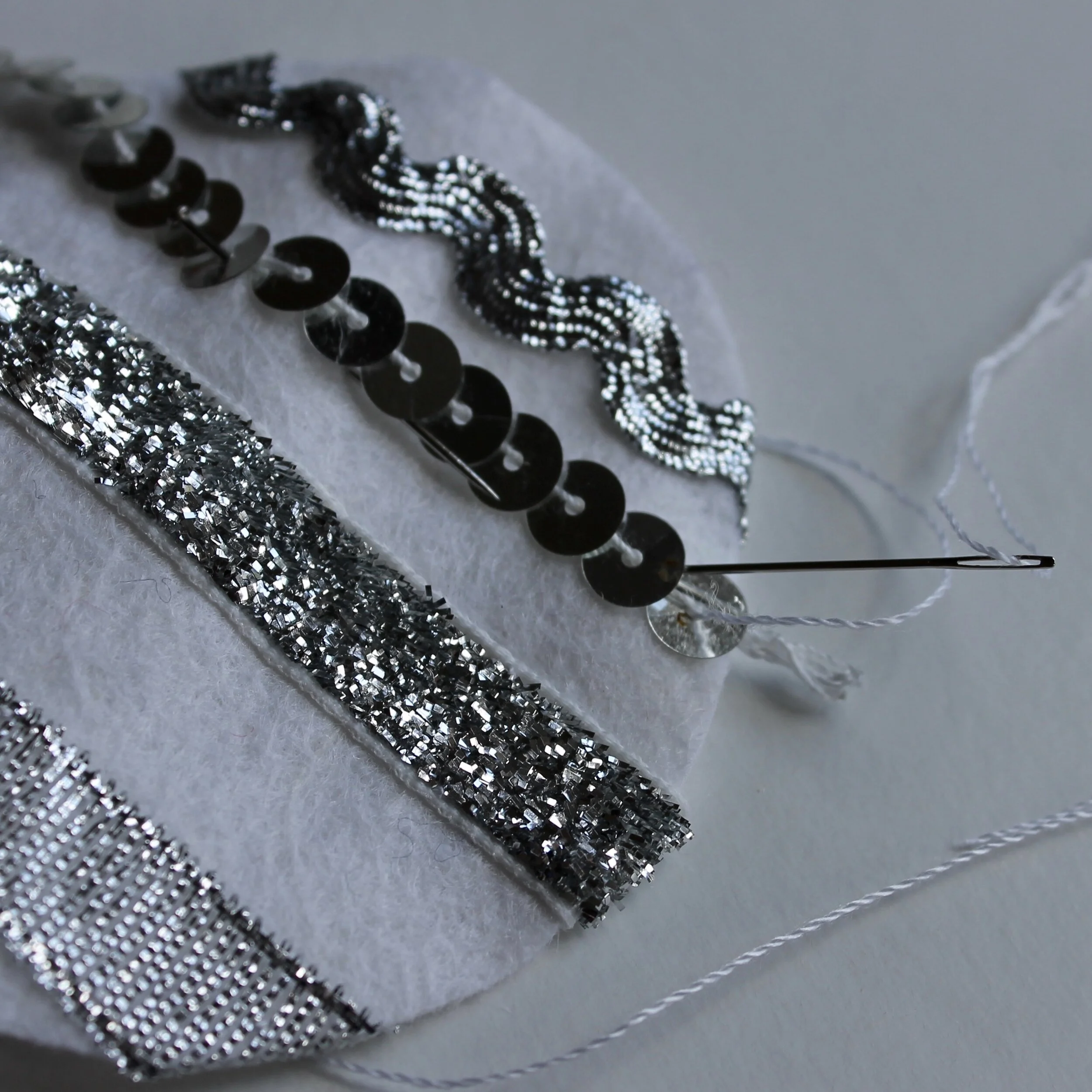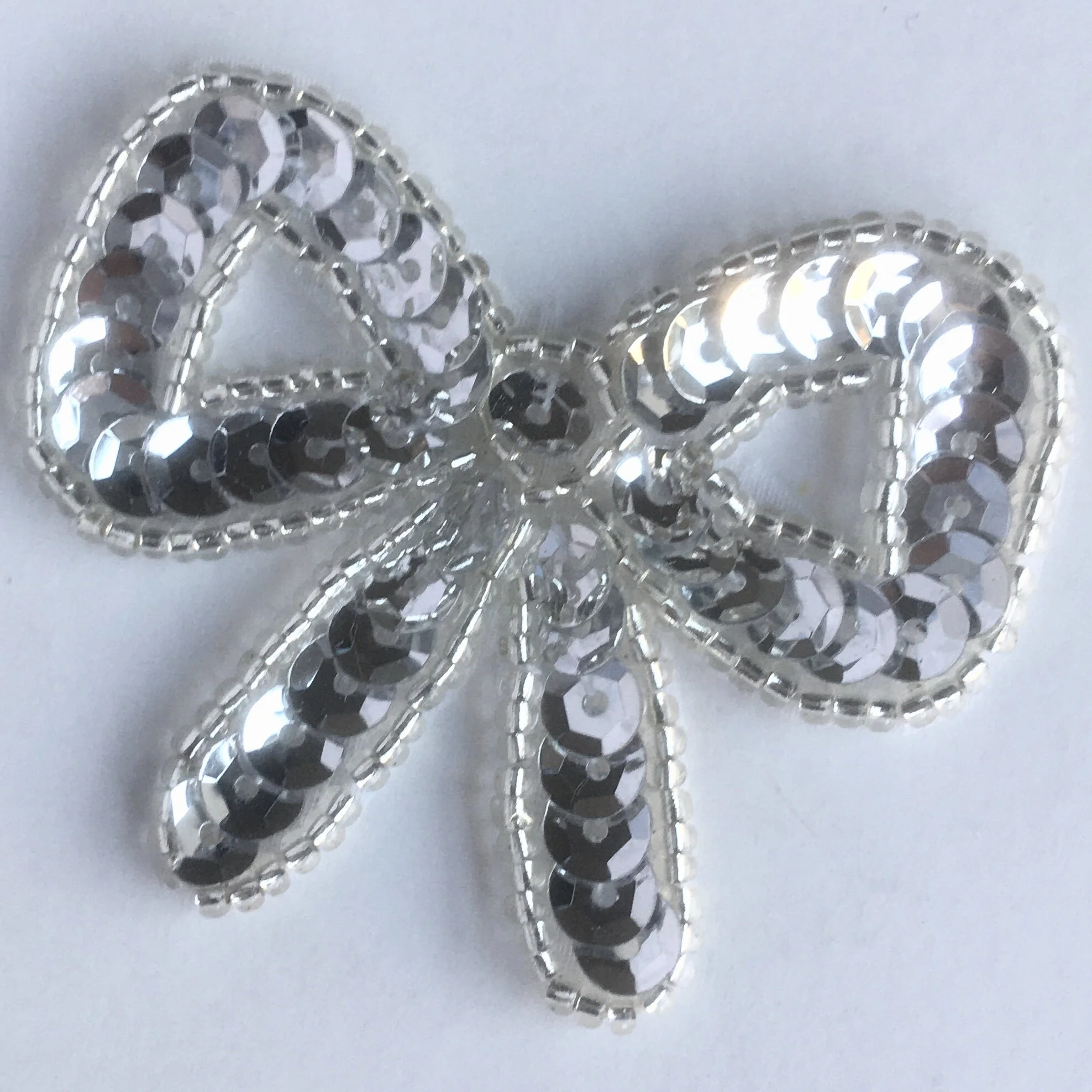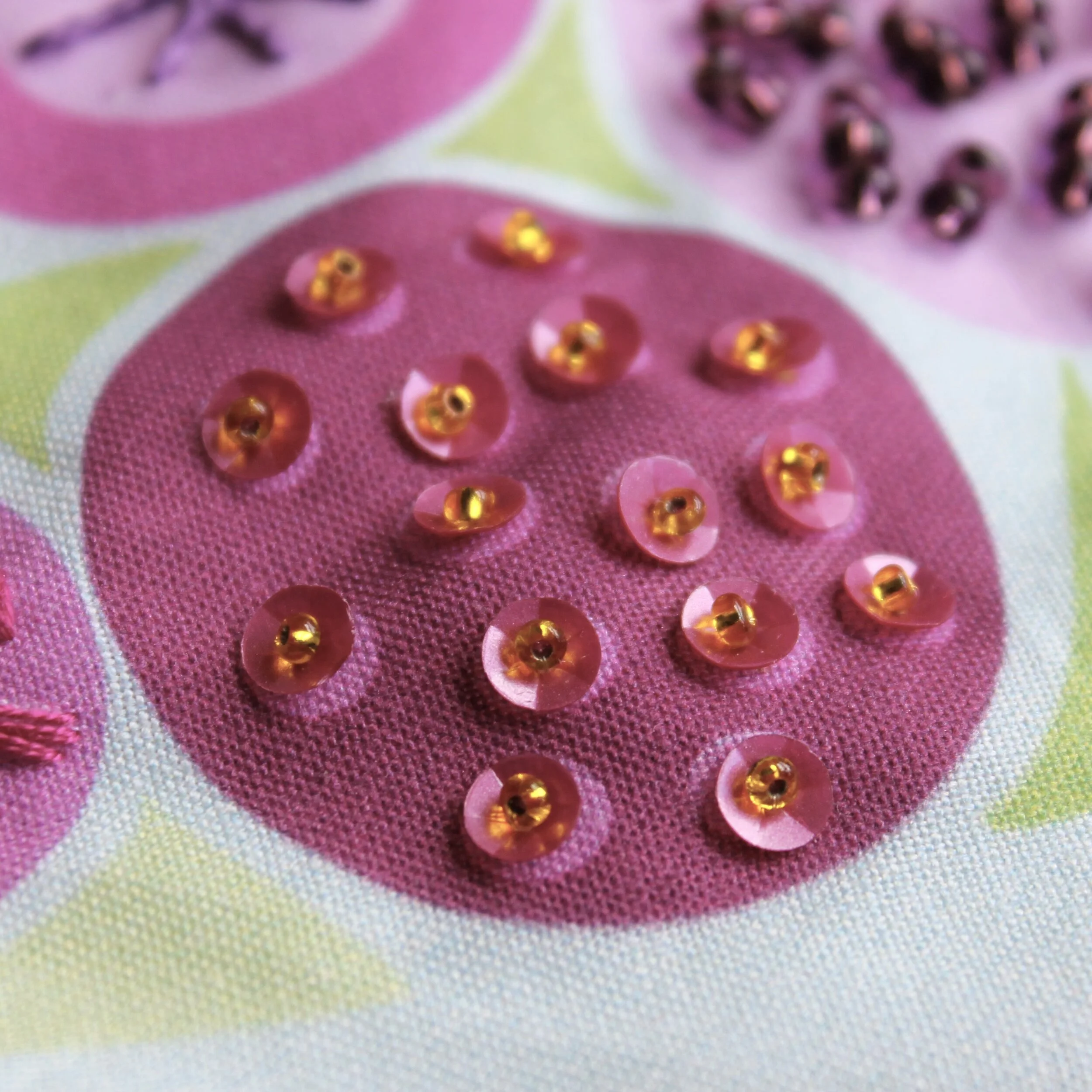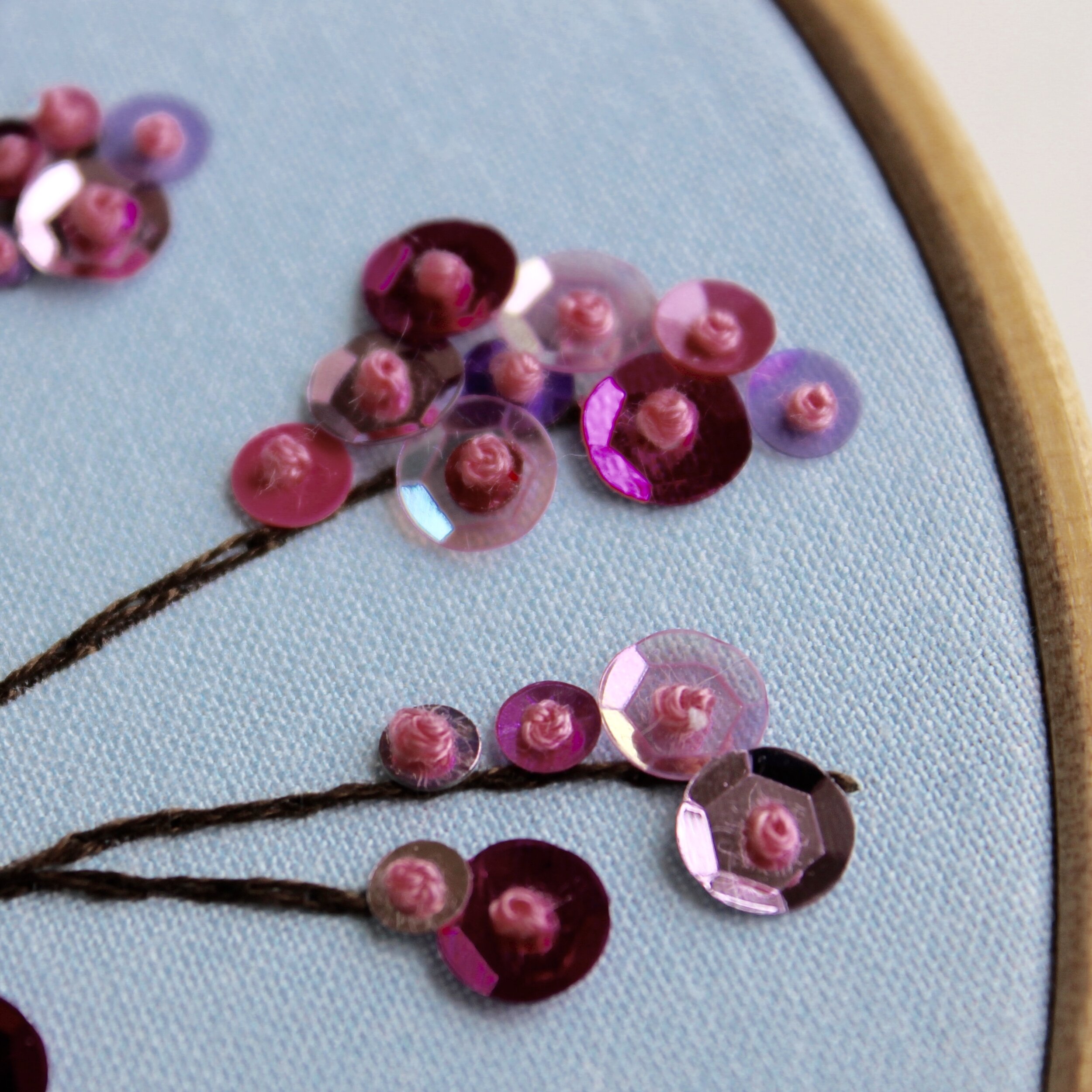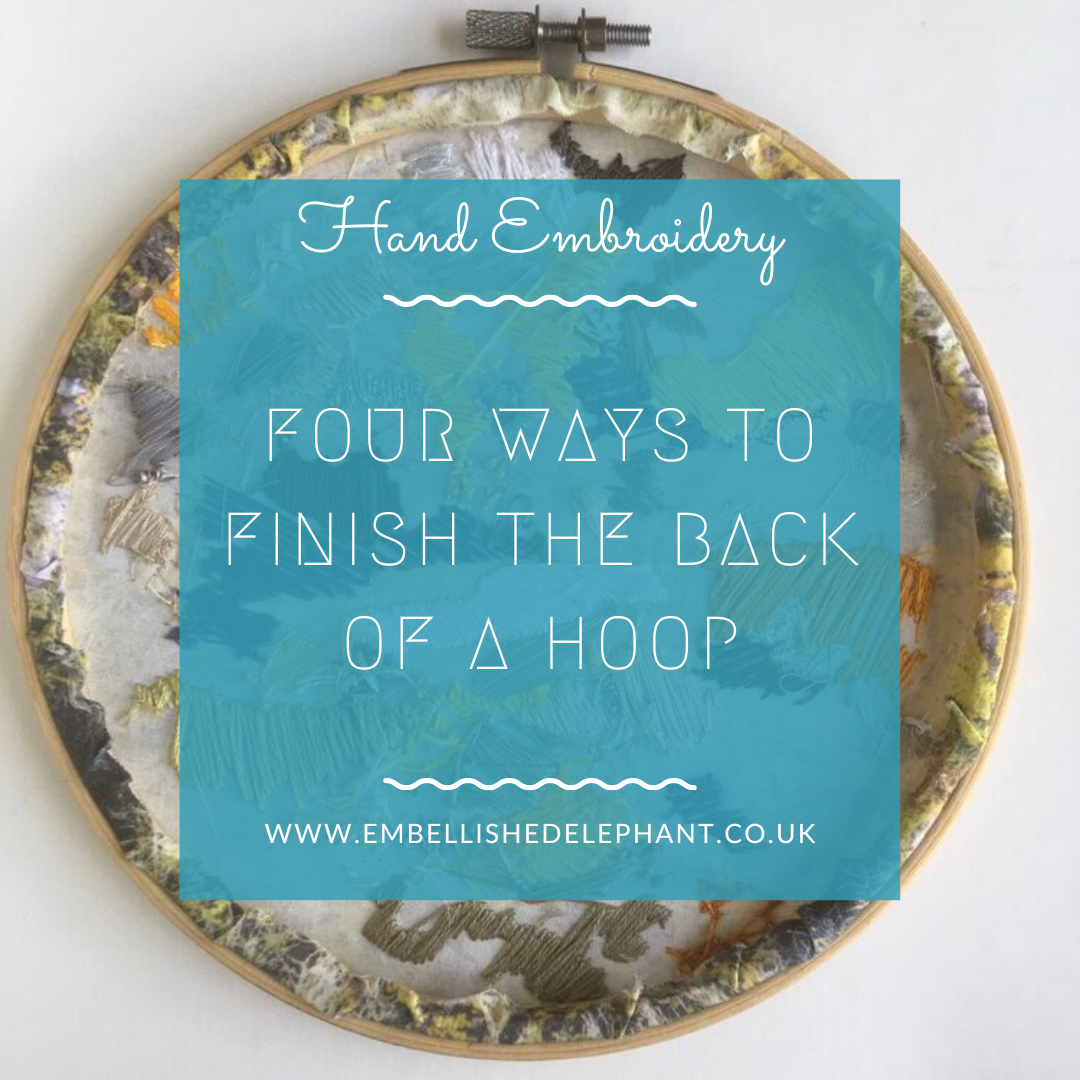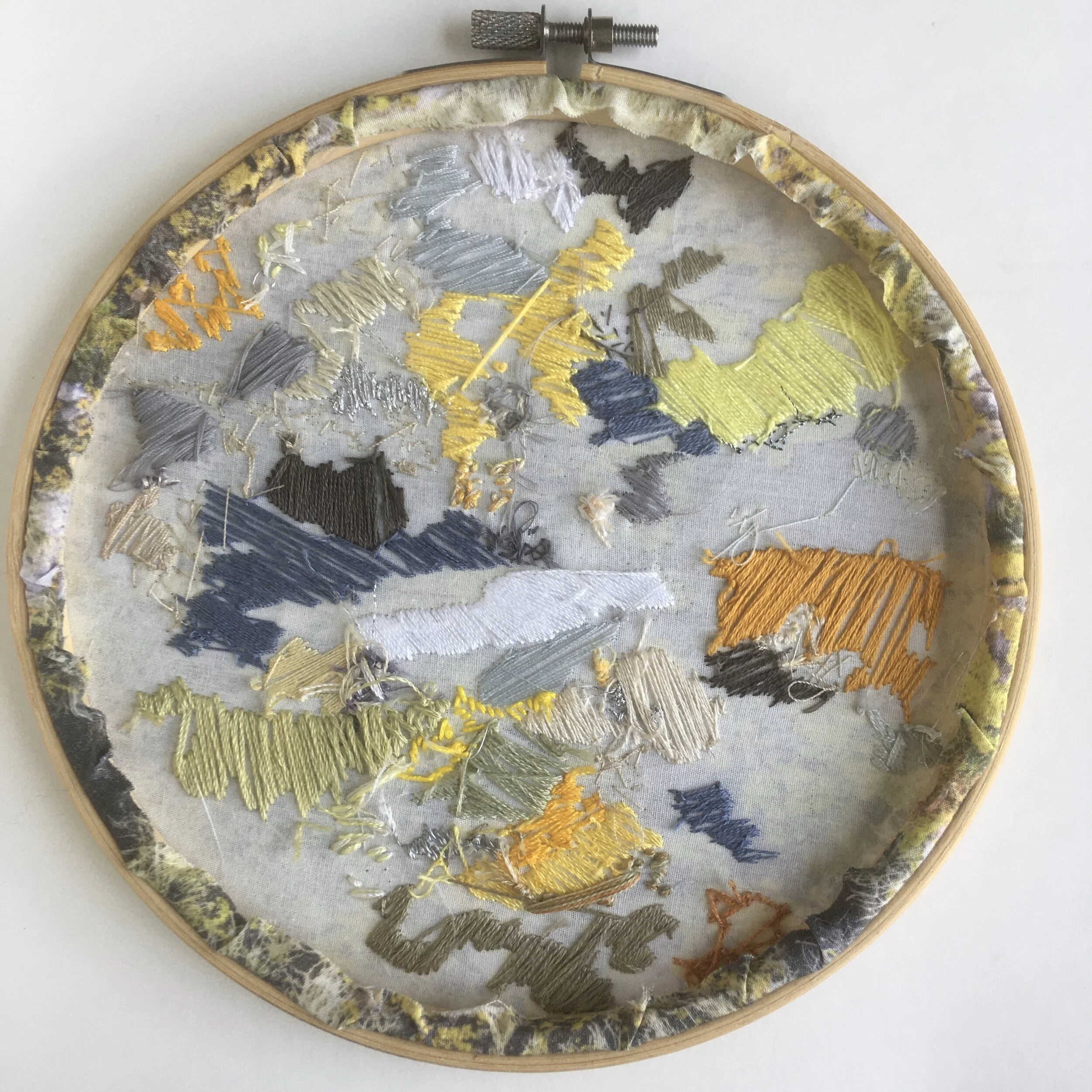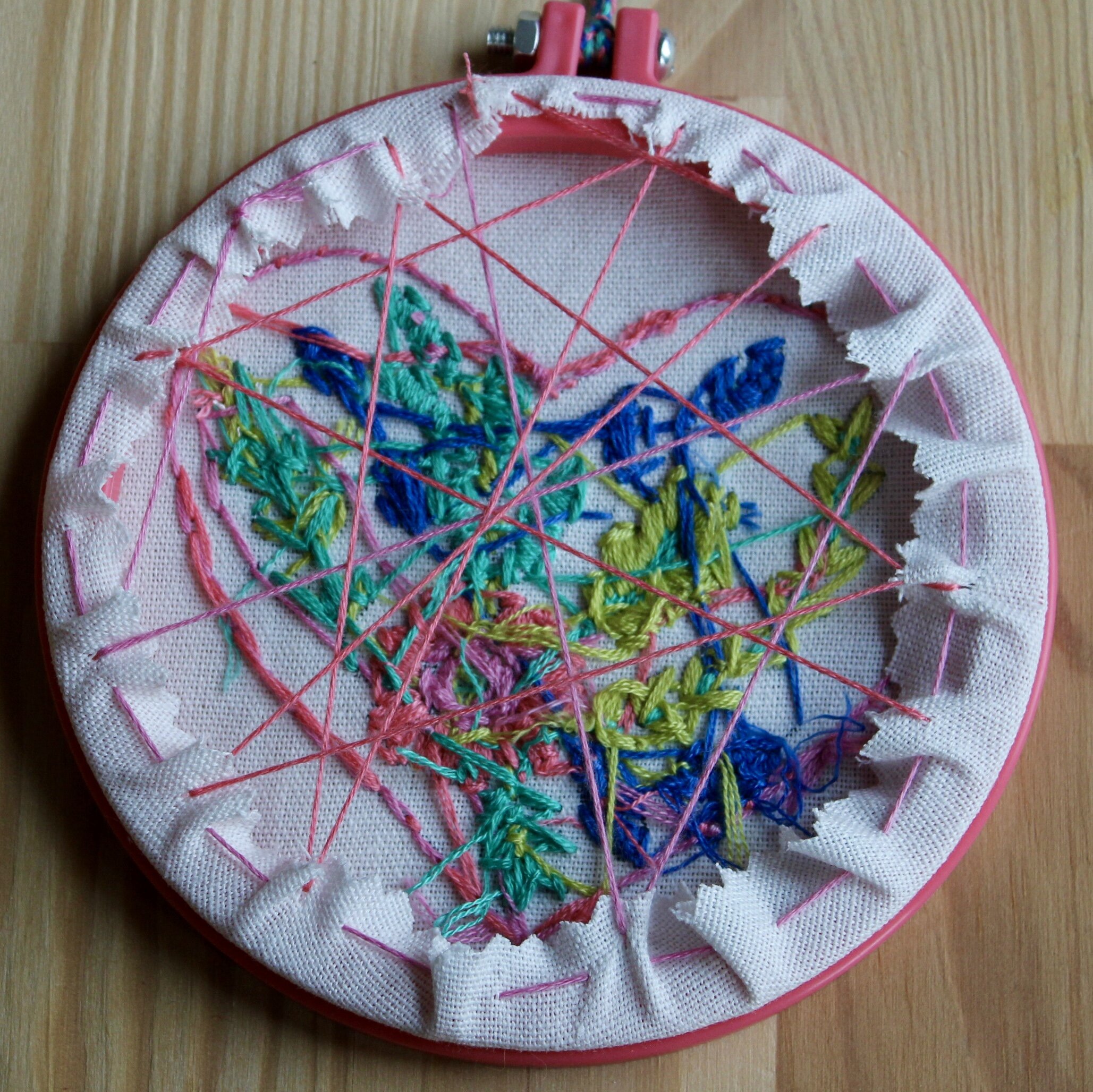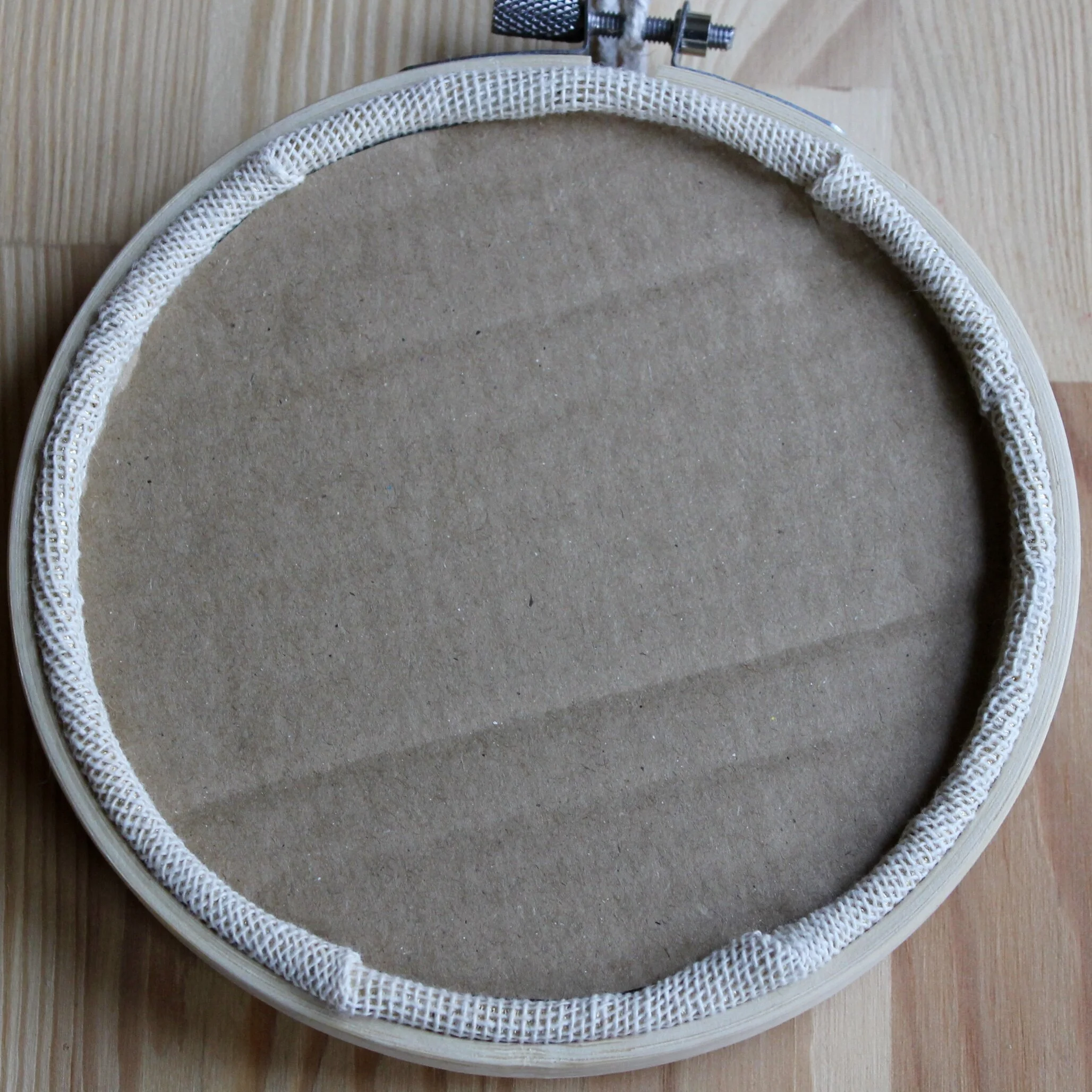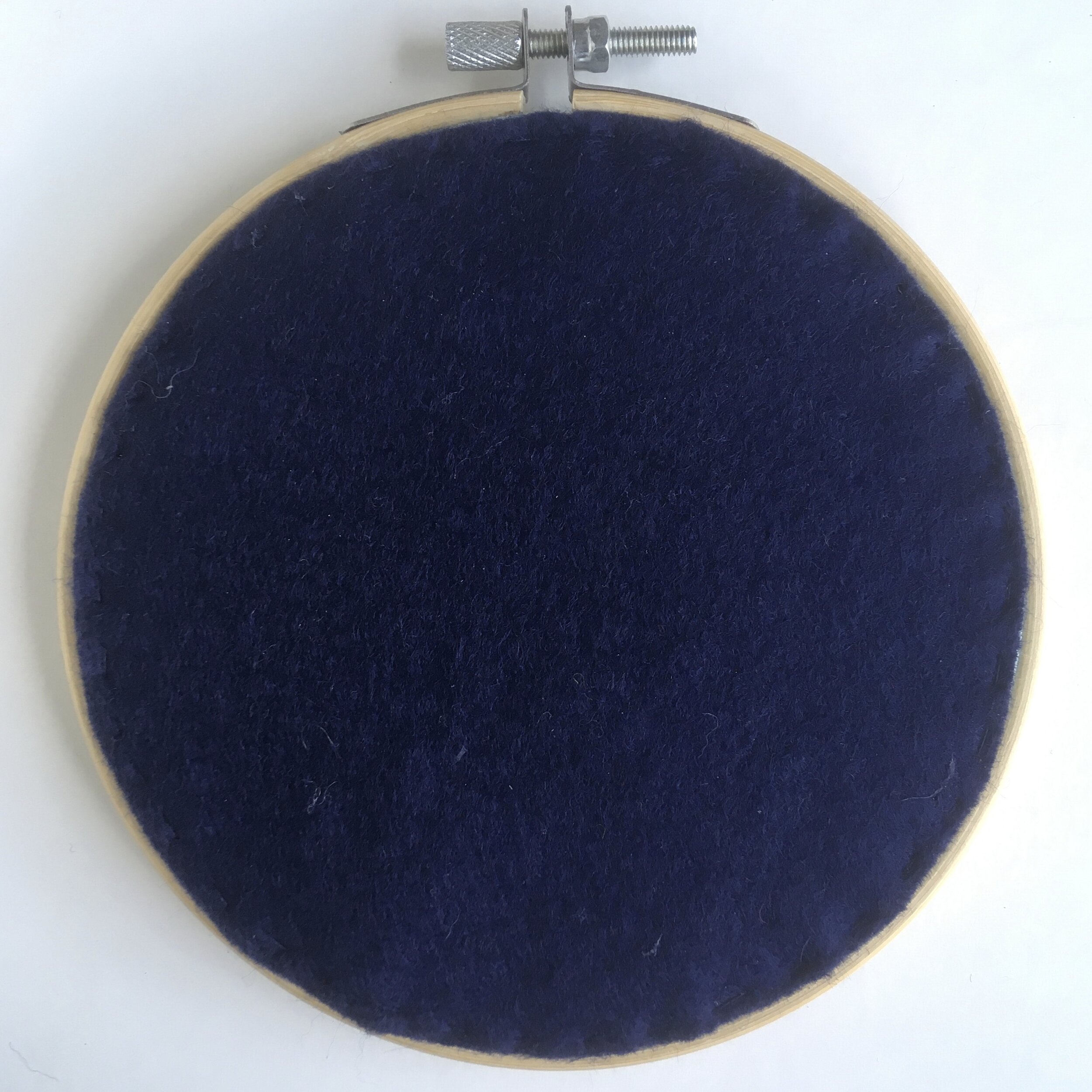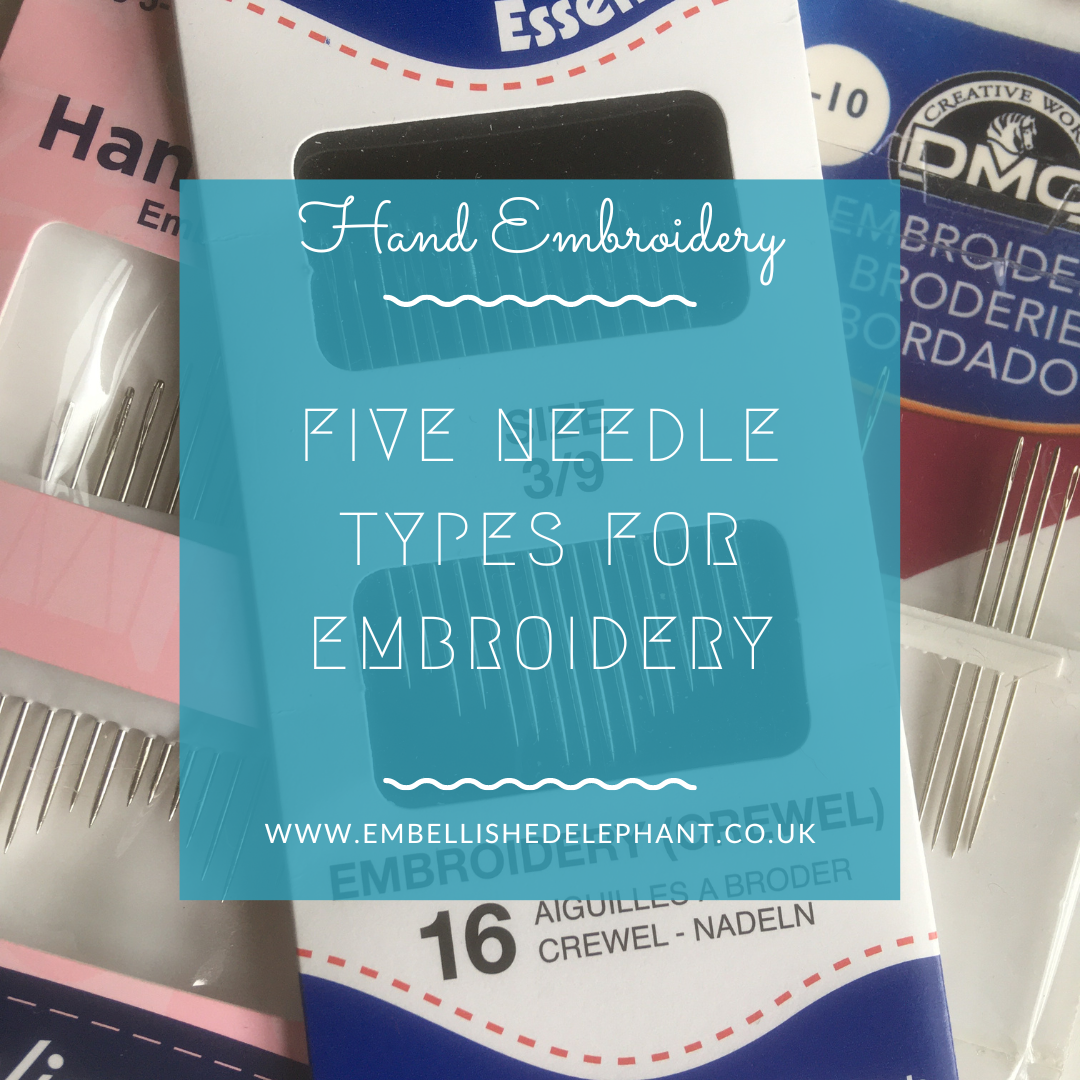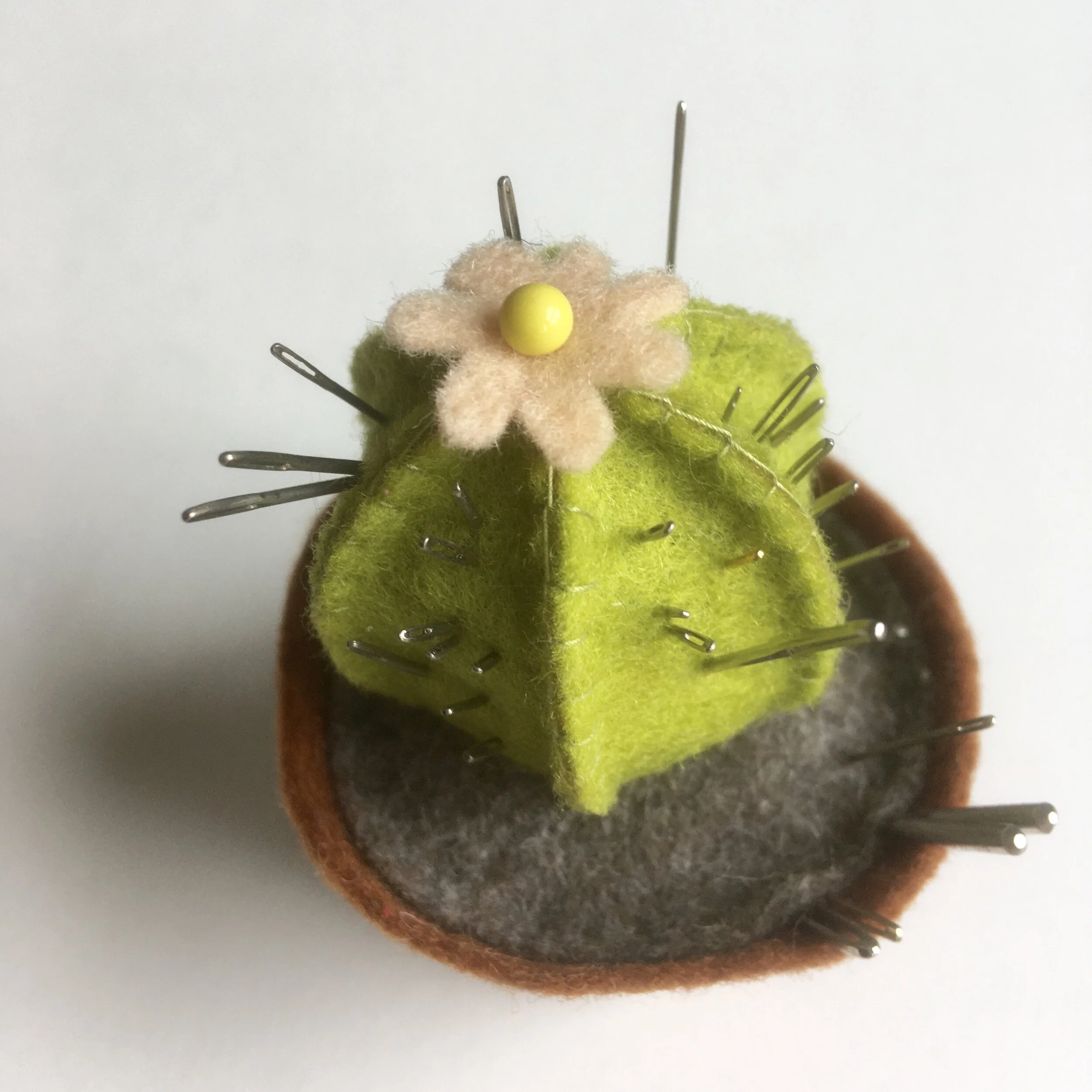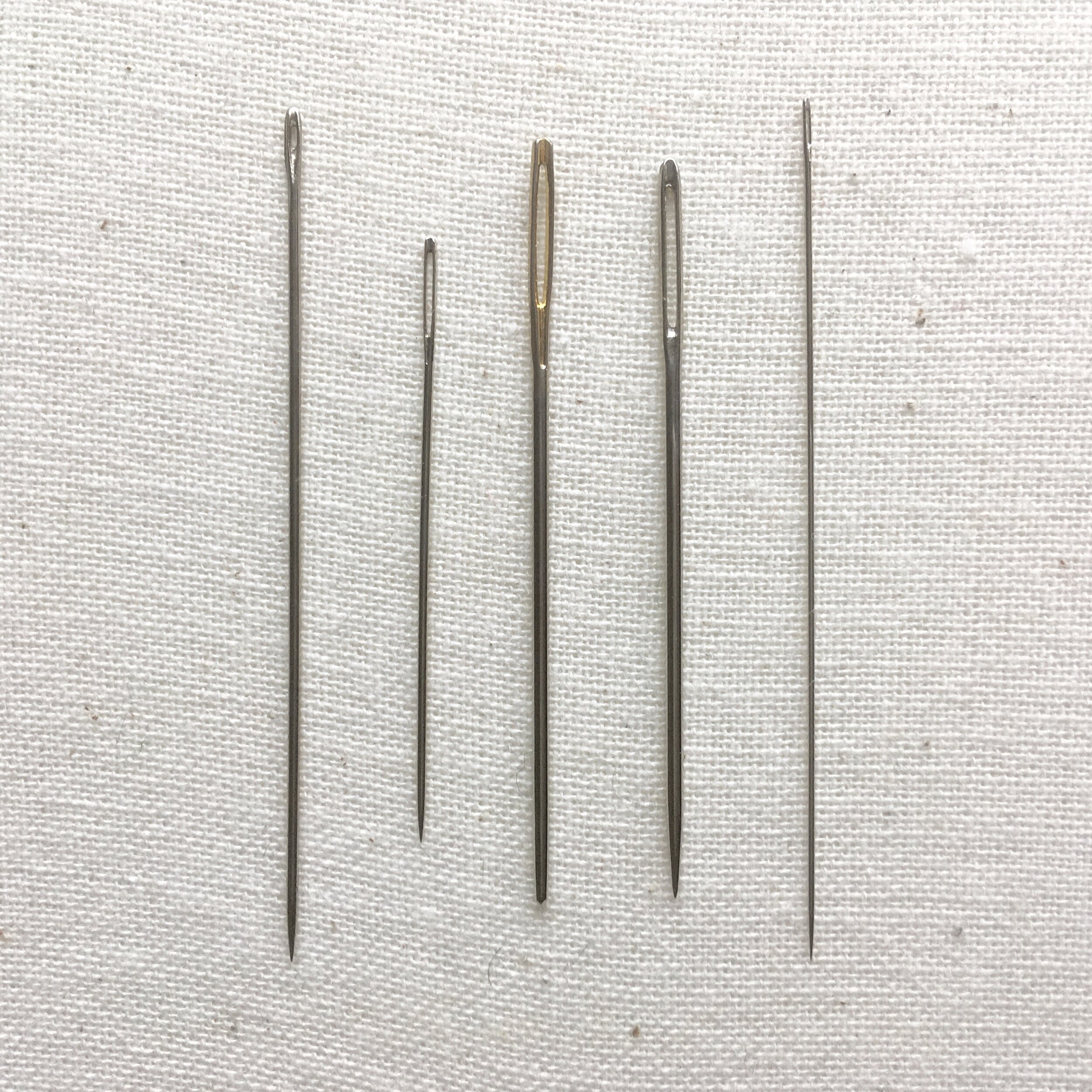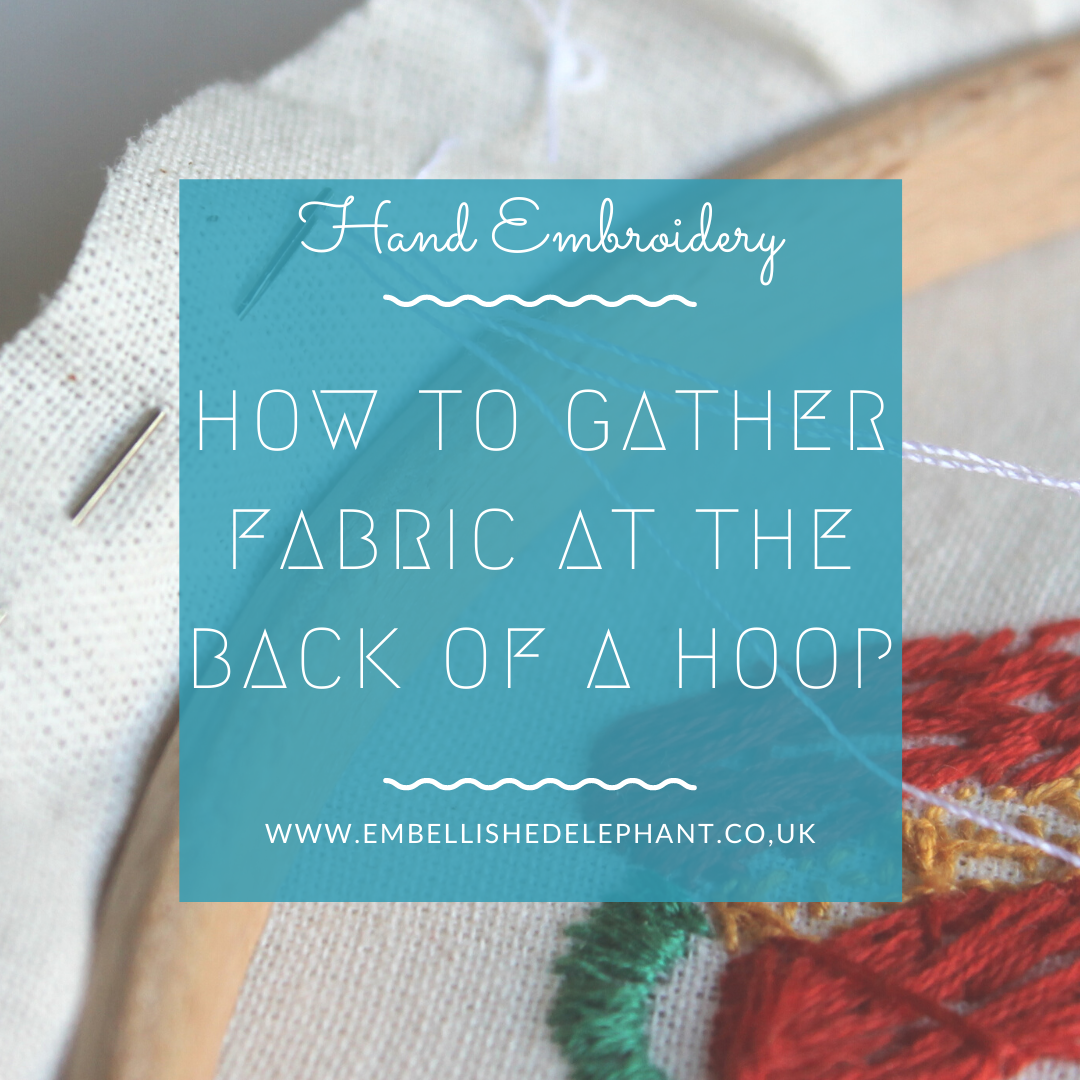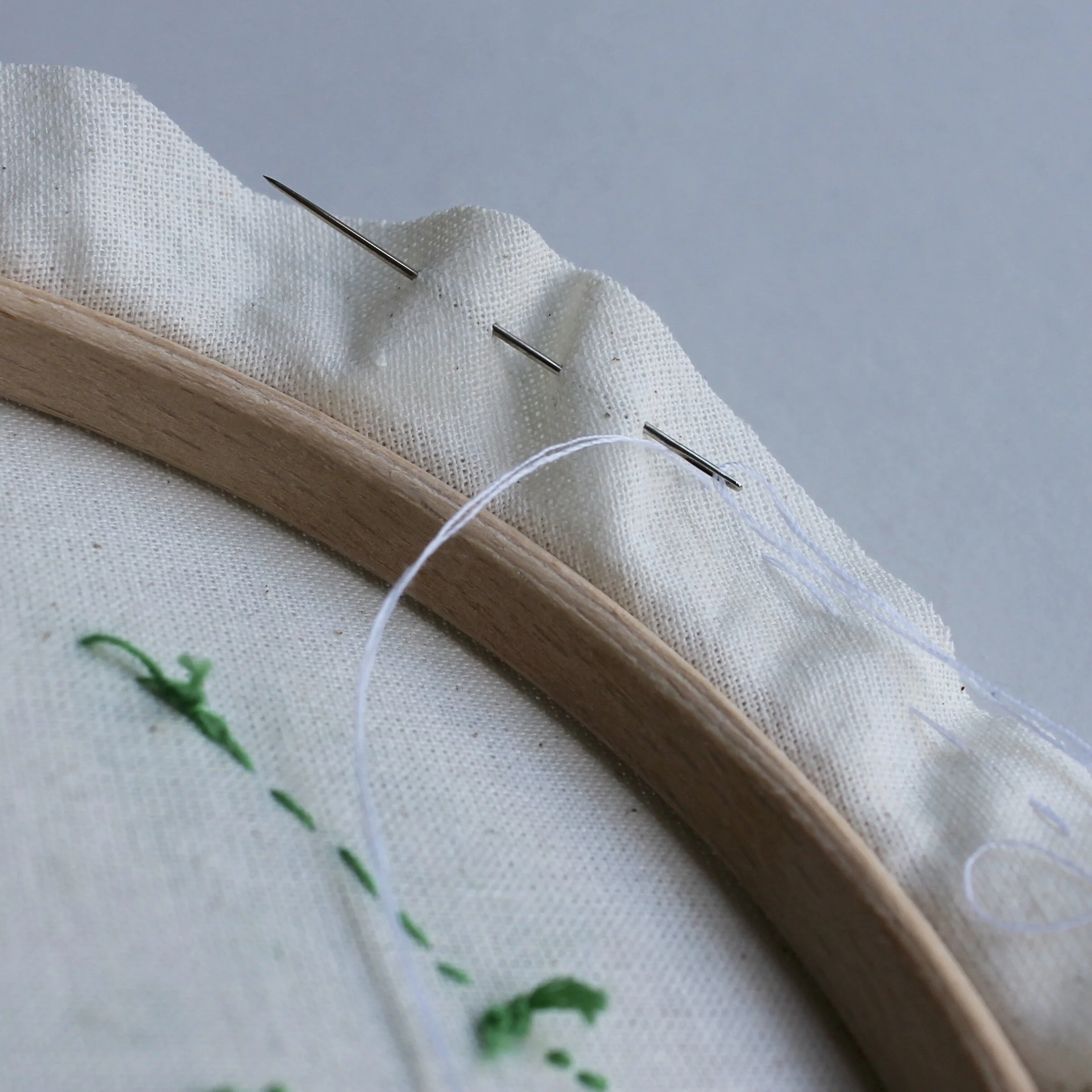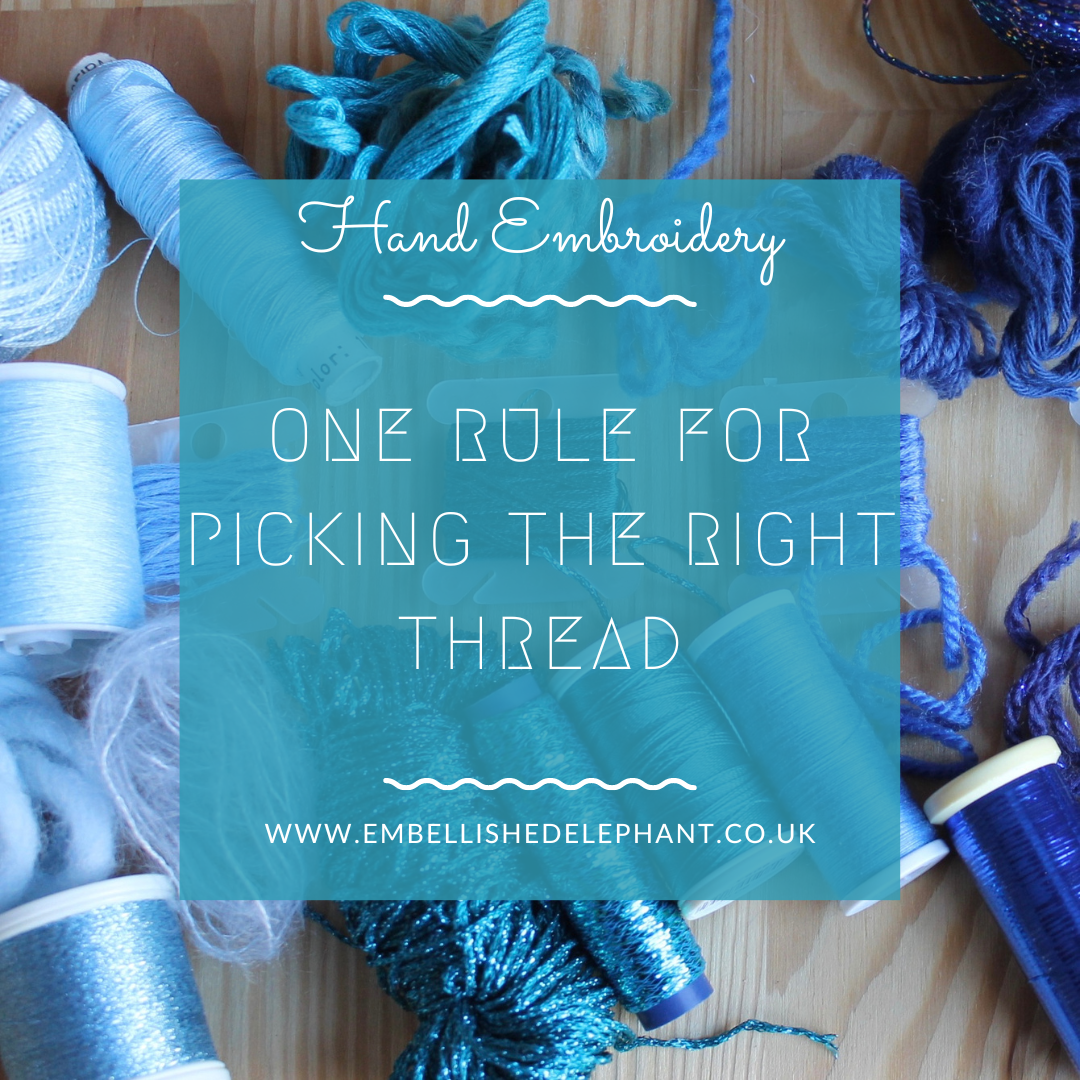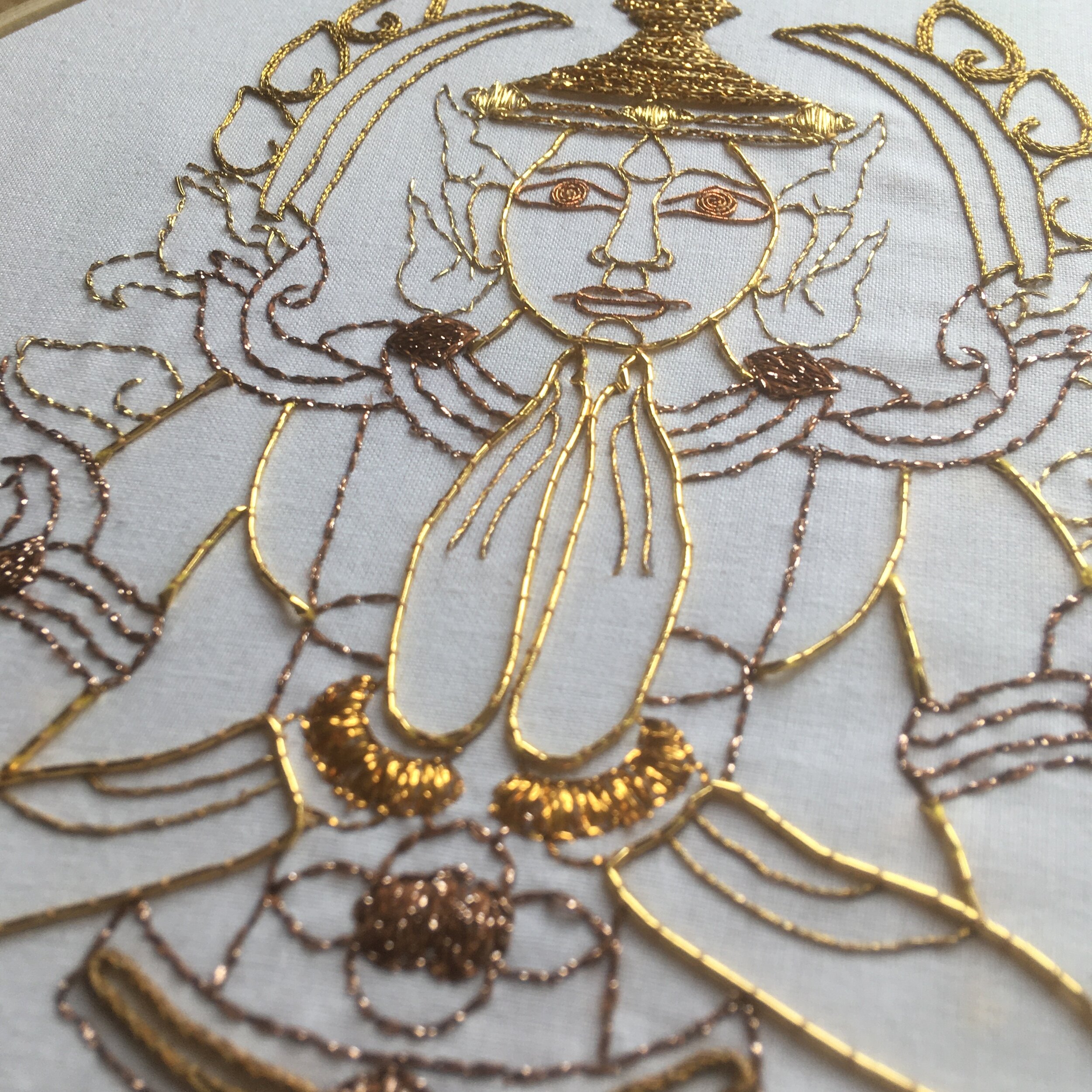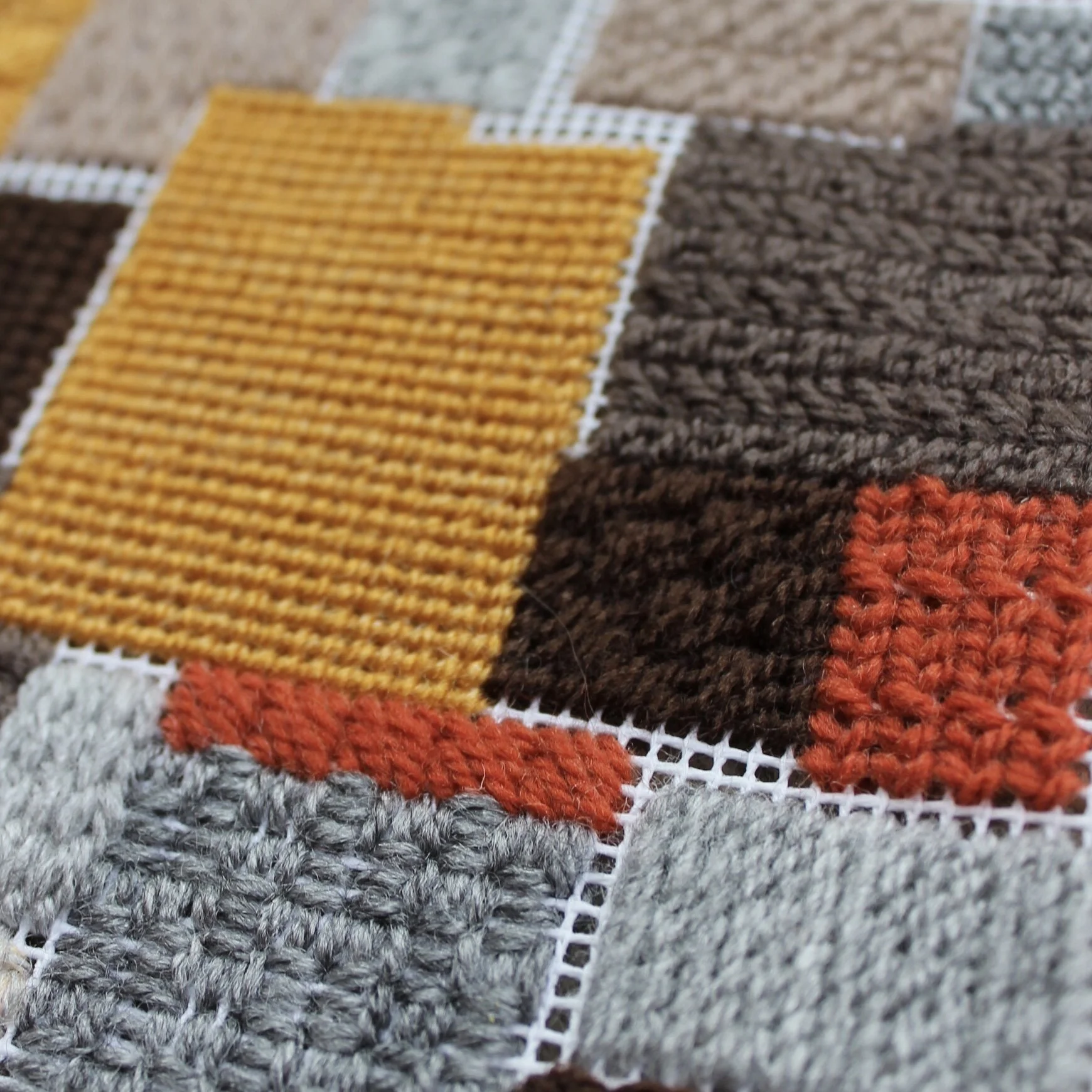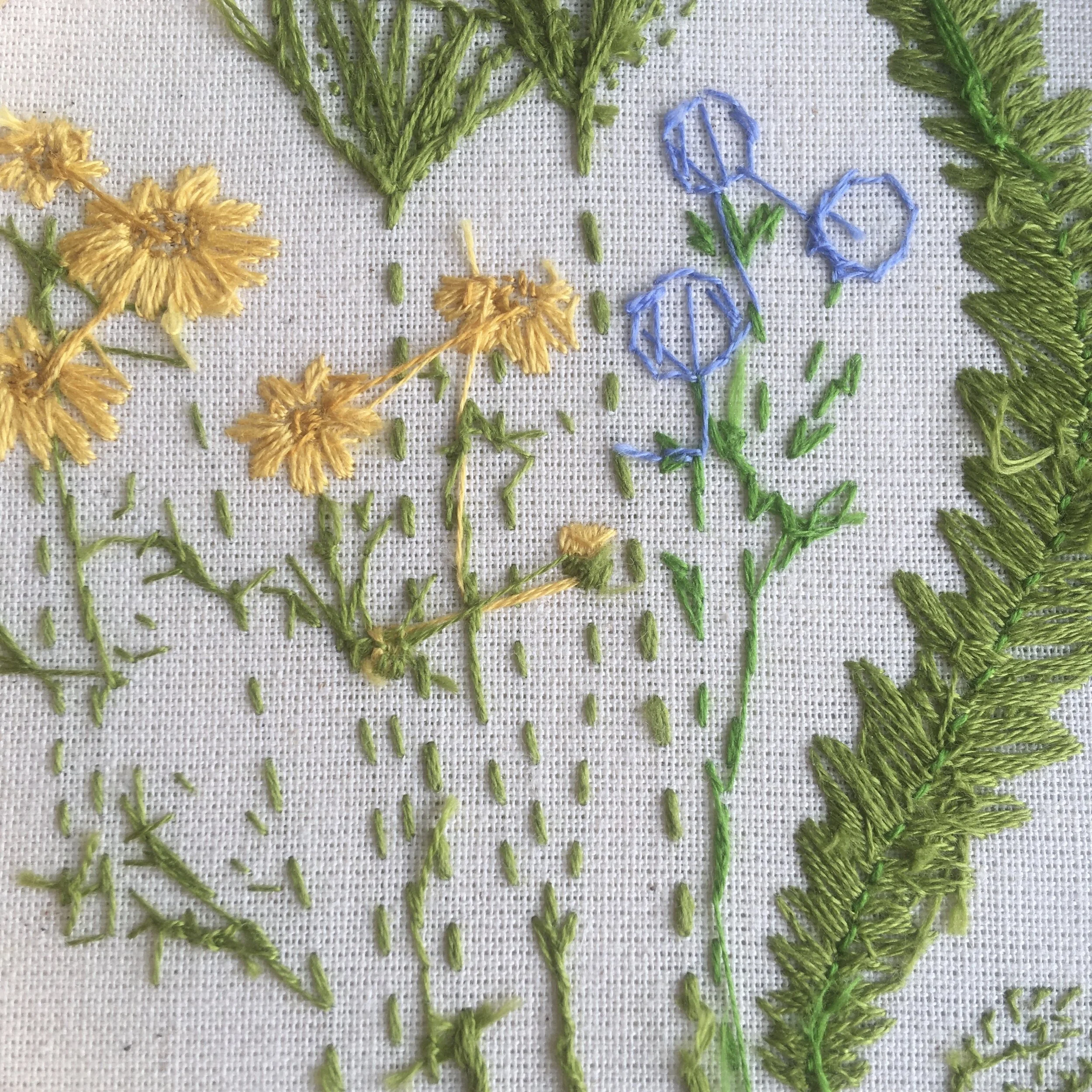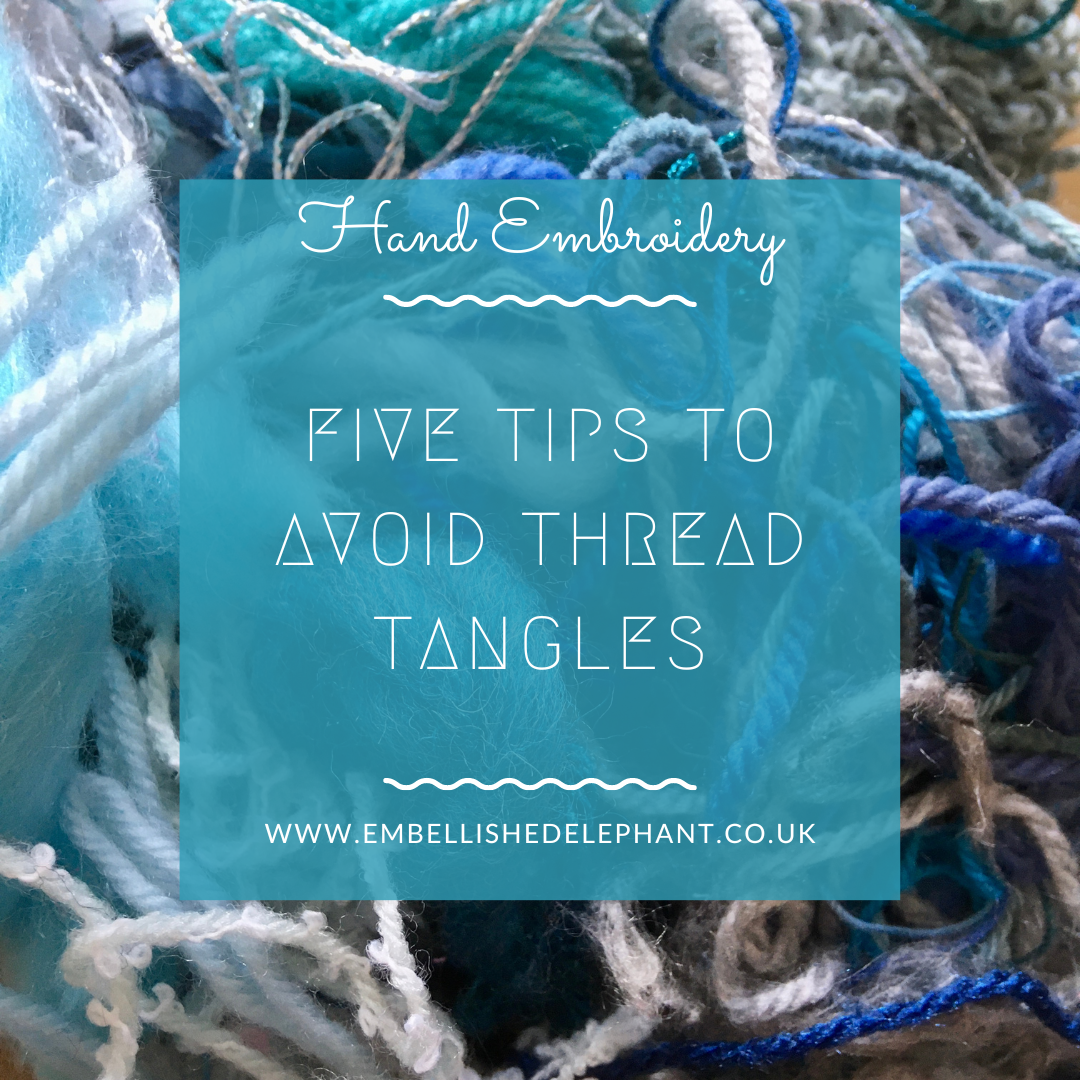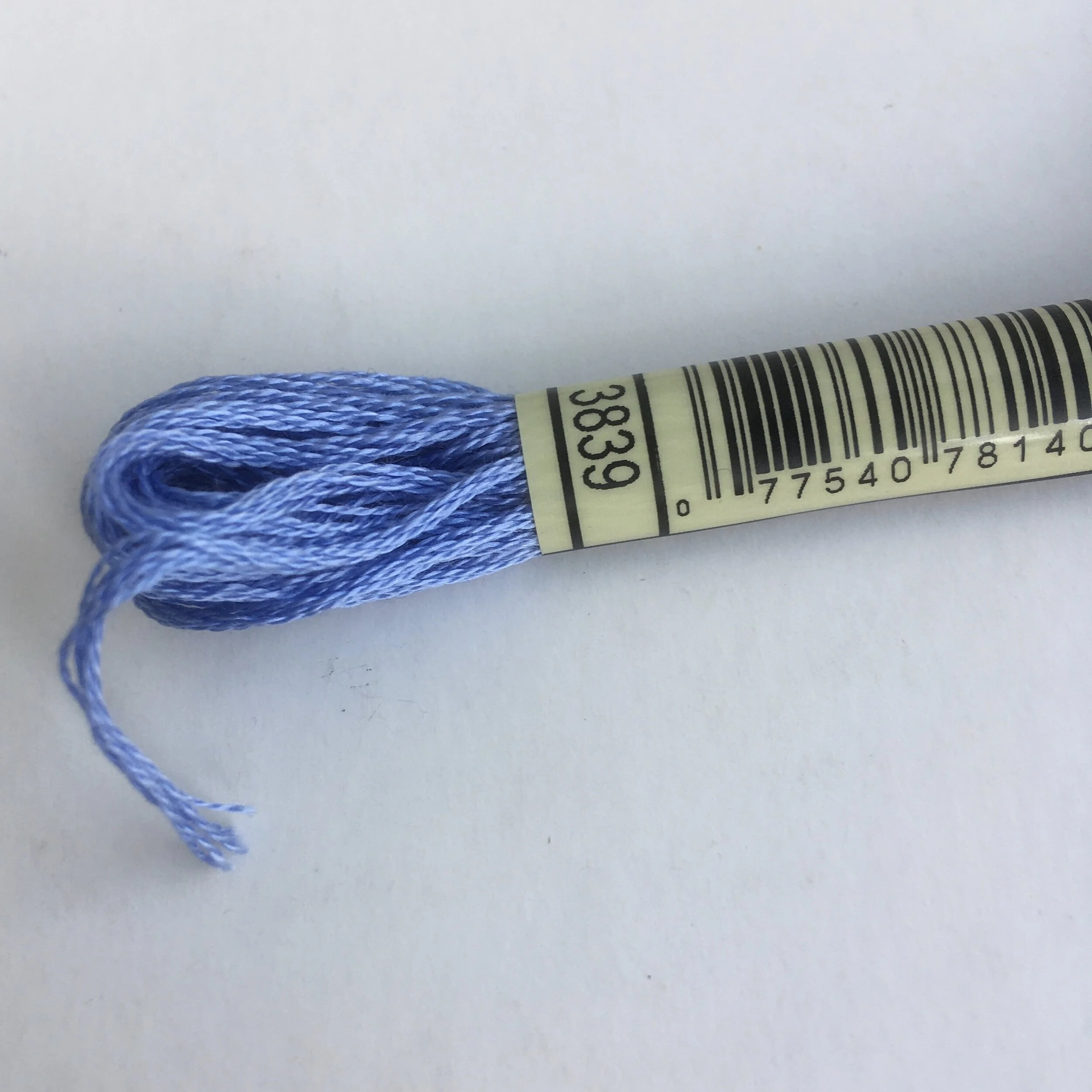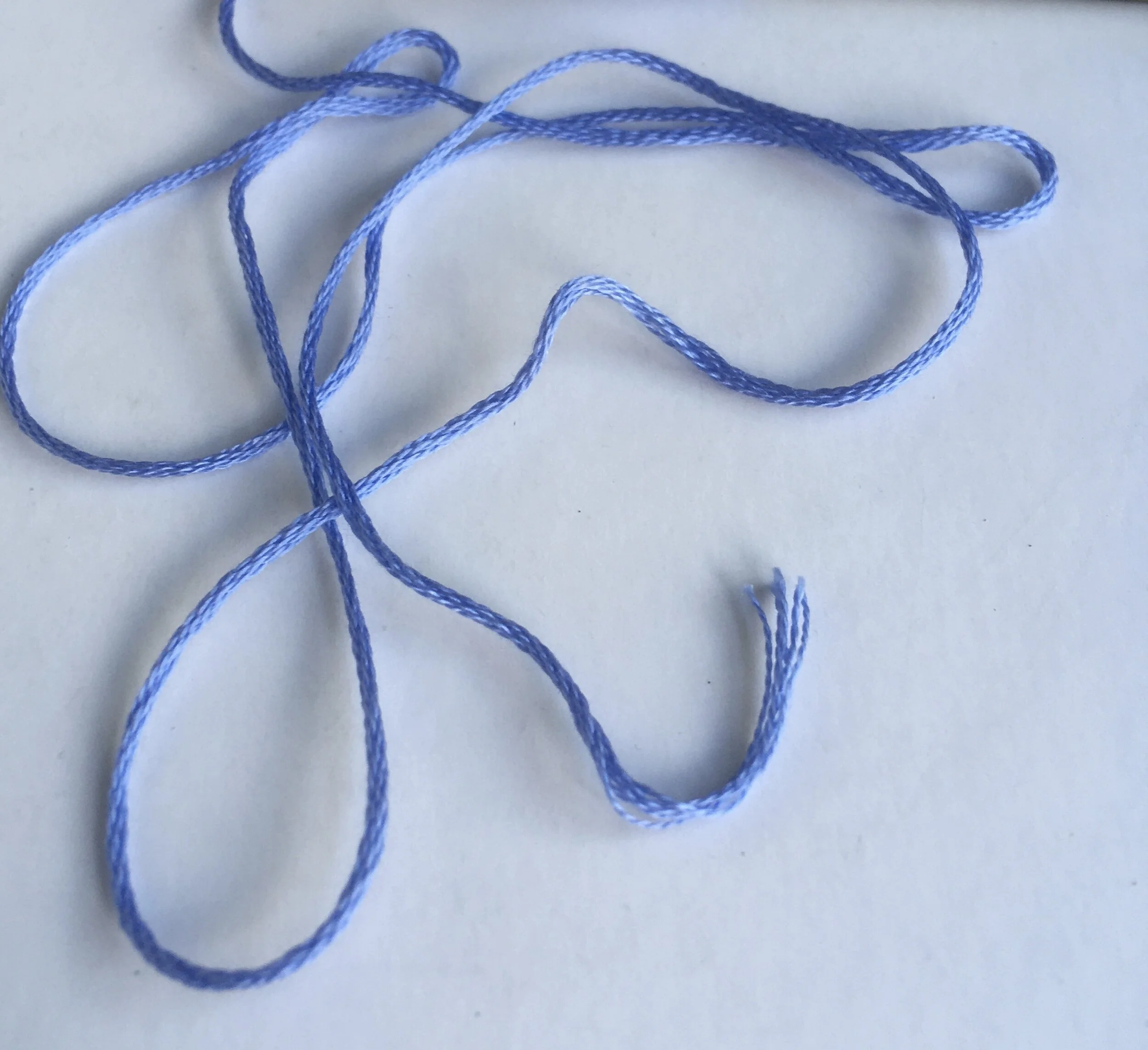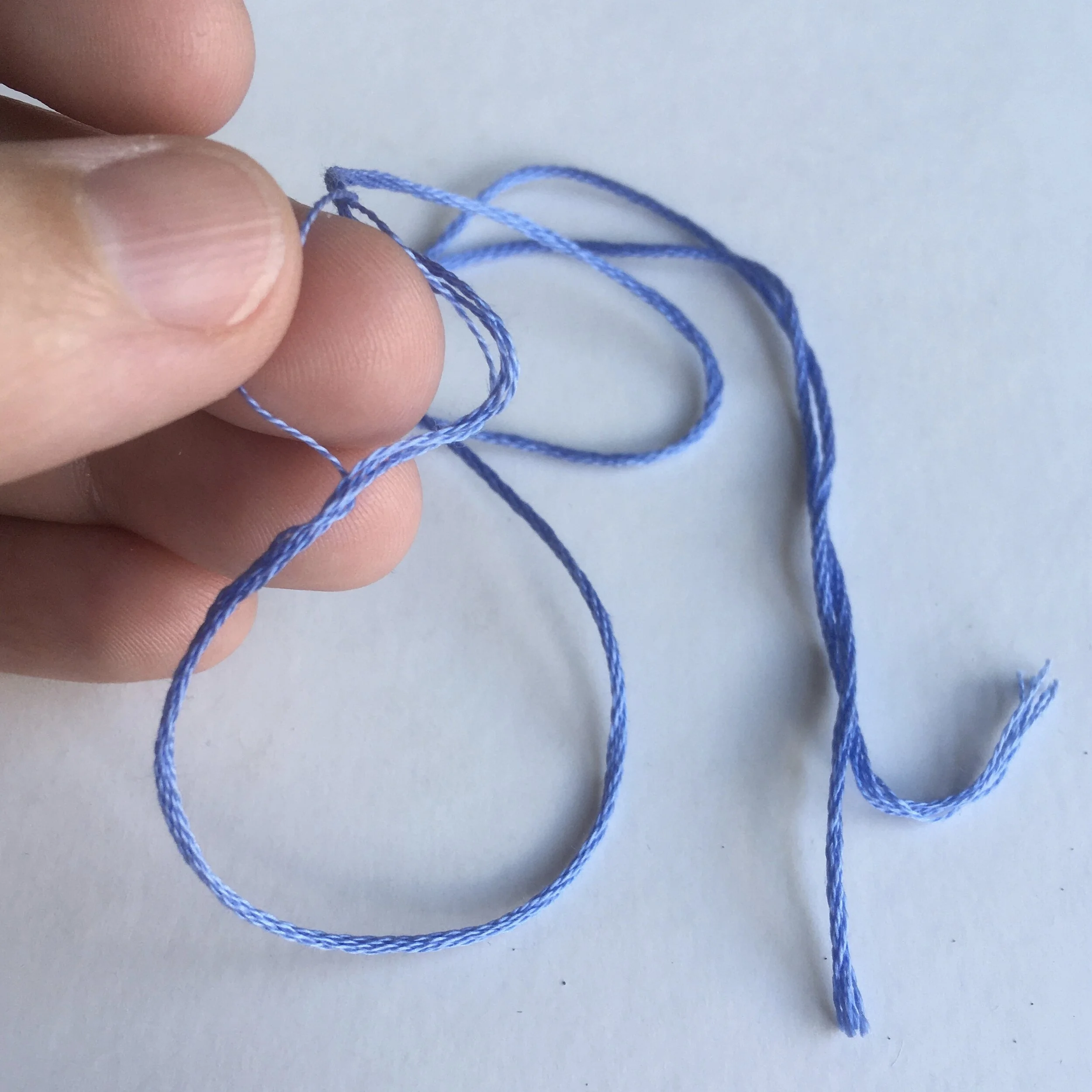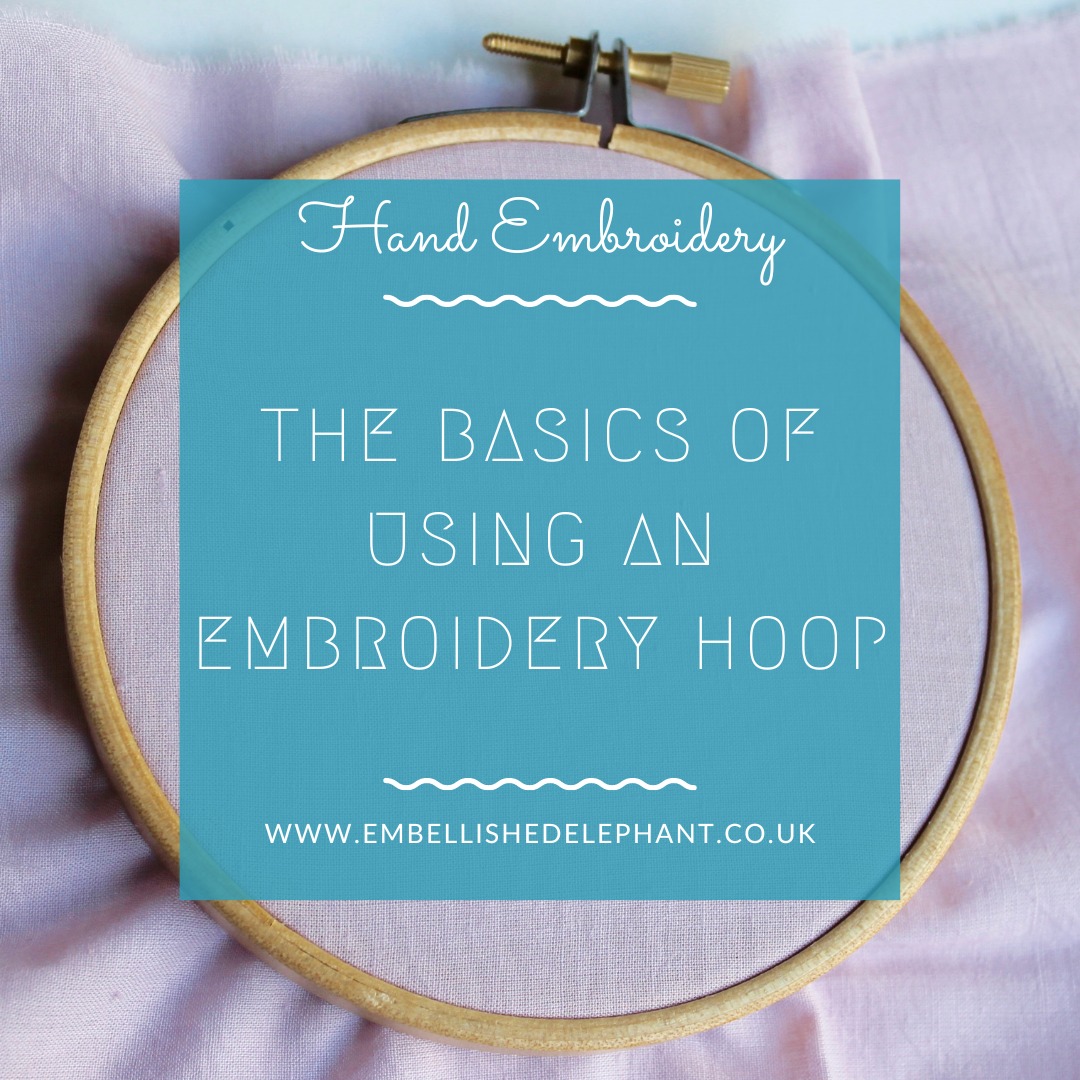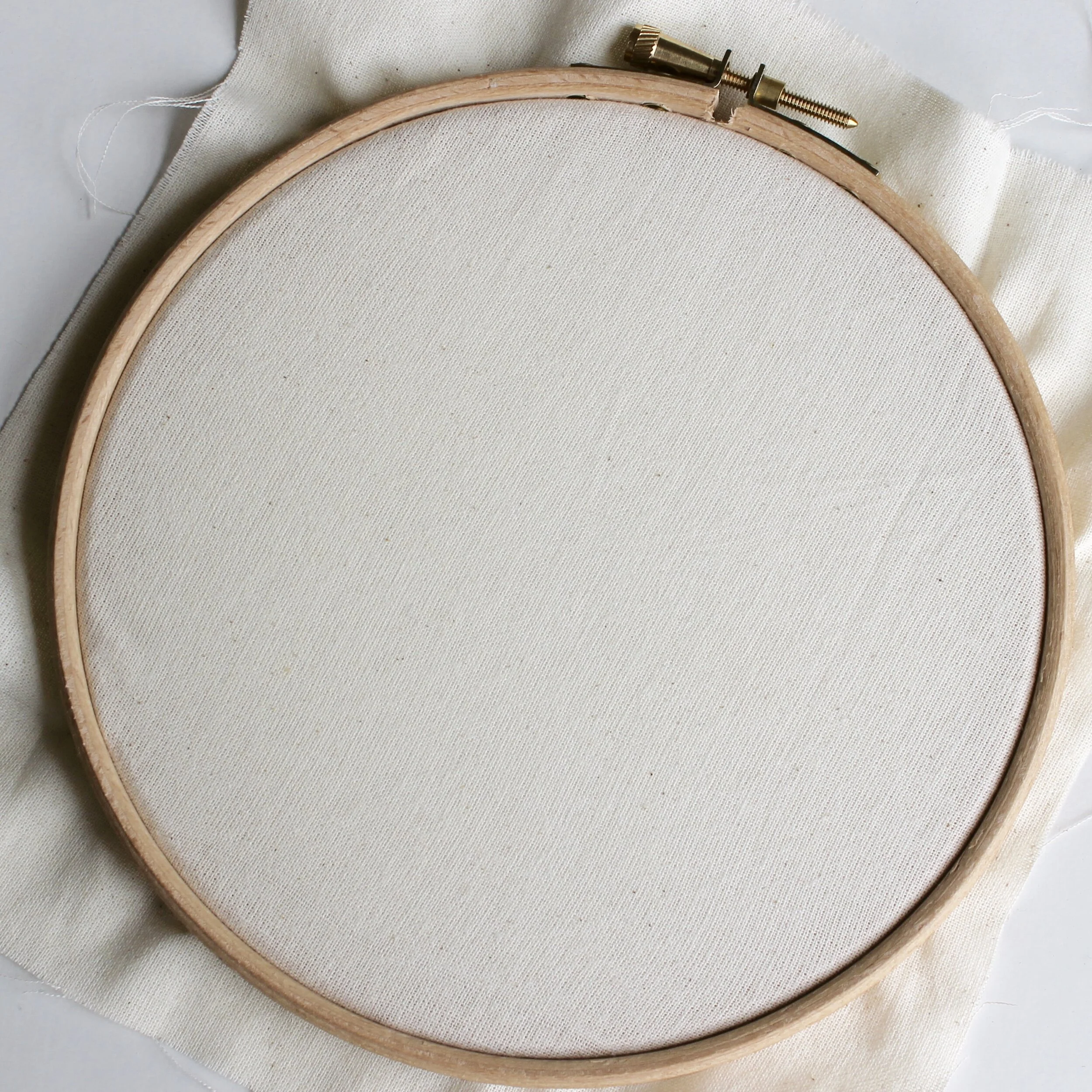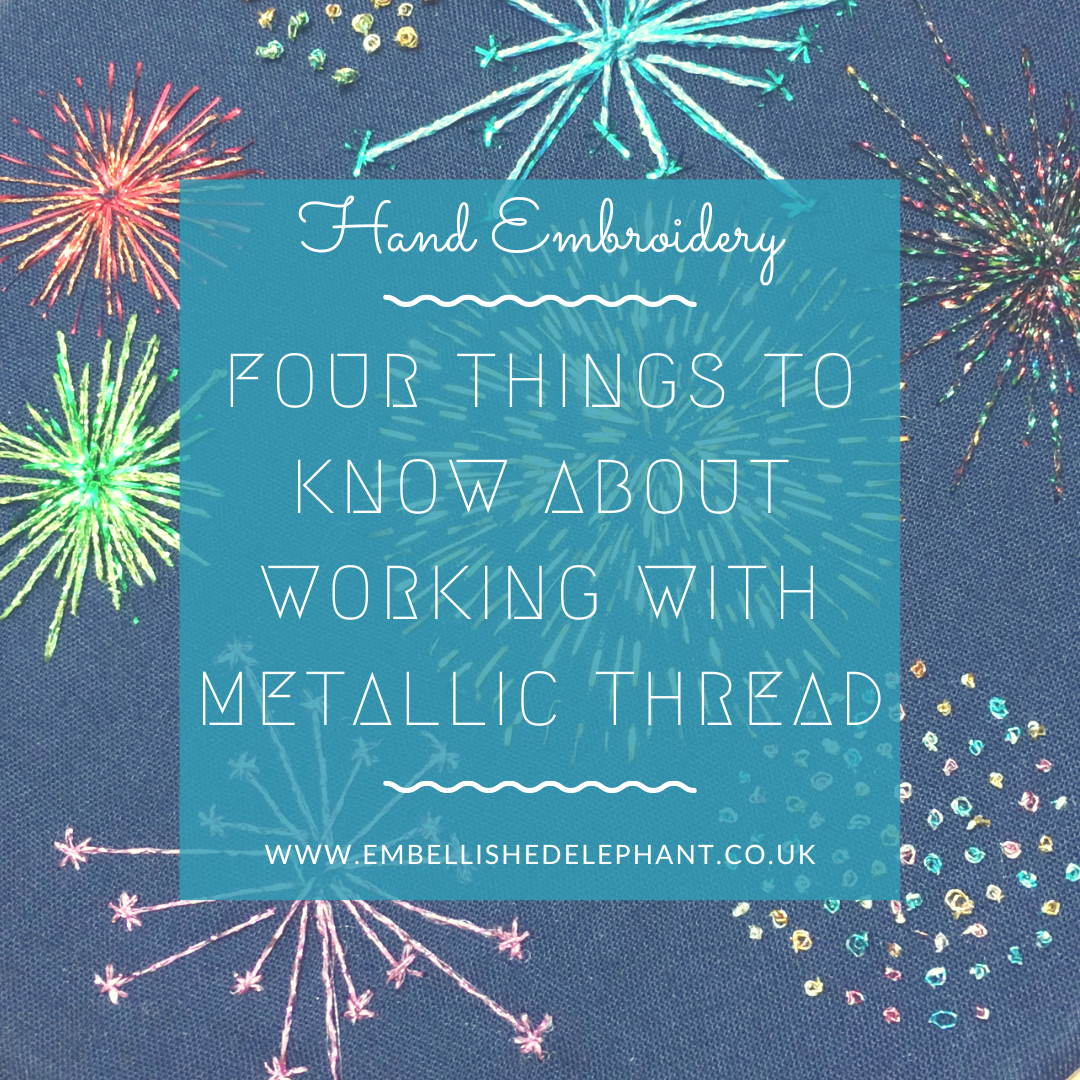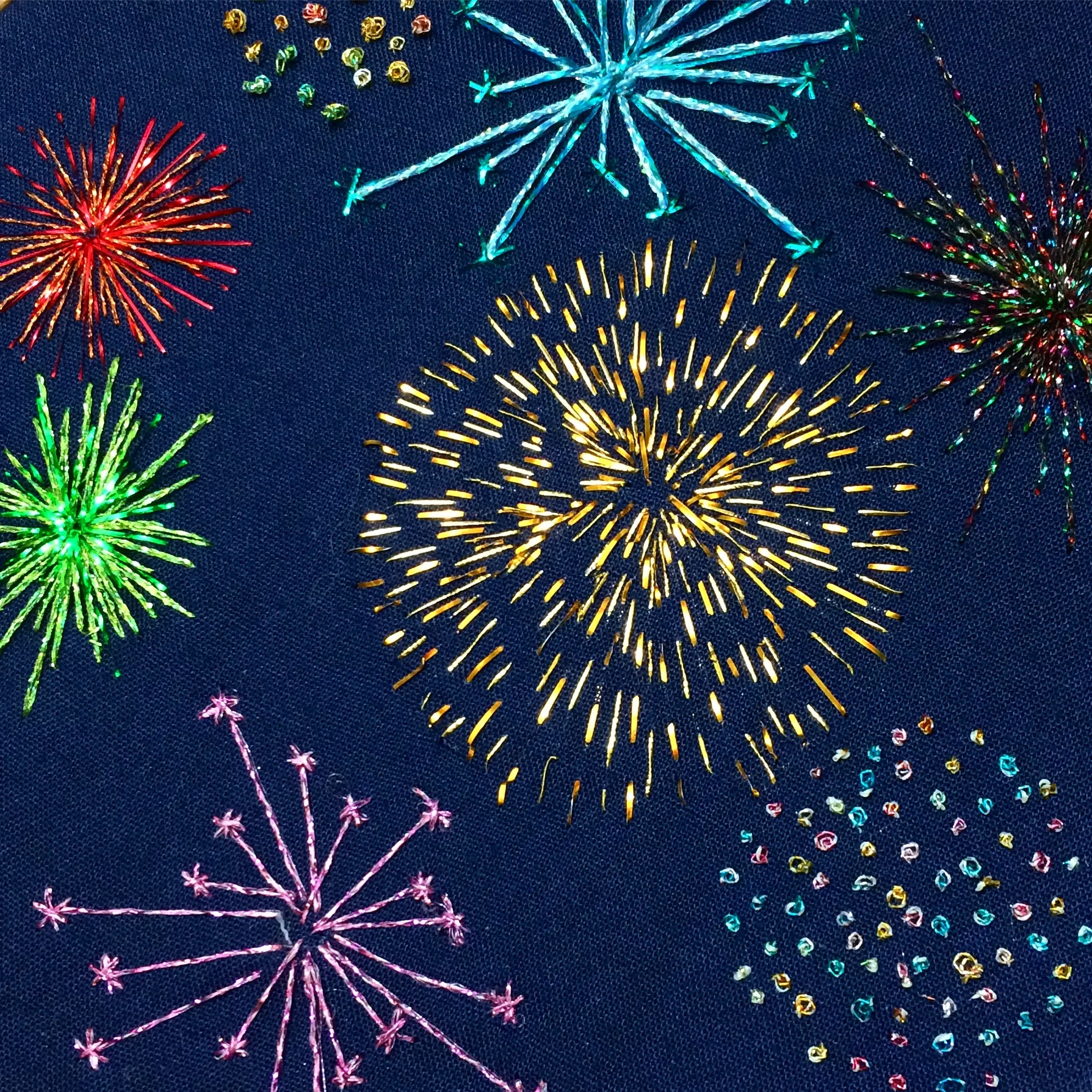The most popular way of displaying a finished piece of embroidery is to leave it in the hoop it was stitched in. A standard bamboo hoop looks great without any added effort, but here are five simple ways to add a wow factor to your finished hoop.
Remove the outer hoop
This is my current favourite, it gives a great clean edge to the piece and I think it makes the embroidery look more like a work of art than an craft project.
All you need to do is make sure the fabric is secured as tight as possible at the back by gathering it. Once you are happy with the tension then just unscrew the outer hoop and remove it.
Wrapping the outer hoop
If you do any sewing projects such as dressmaking or patchwork you will probably have strips of fabric off cuts, these can be carefully wrapped around the outer hoop to change up the finished loop of the hoop.
Ribbon can also be used to wrap round the hoop as can yarn.
A glue gun can be used to secure the start and end of the material used, but when wrapping this hoop with yarn I used a needle to secure the ends and keep everything in place.
Painting/staining
Changing up the colour of the outer hoop can really alter how the finished piece looks.
Acrylic paint works well for this but you could use any paint you have around even some emulsion from that last decorating job!
Sewing on felt shapes
For this holly wreath, the felt leaves are stitched onto the outer hoop as a feature of the finished piece. You don’t have to cover the whole hoop. A few flowers on one part of the hoop with just some plain fabric would look fantastic.
Crocheting around the edge
Picking the right edging stitch can make a great frame and create a soft edge.
The crochet is around the outer edge of the hoop and different stitches will create different effects. A shell stitch is a great one to use if you want a scalloped effect.
Adding pompom trim (or other embellished edging)
I think this works especially well for colourful projects such as cross stitch. I’ve not tried this myself but this picture from The Make Arcade shows how fantastic it can look.
Enjoyed this blog post? I share embroidery tips and a free embroidery pattern in my monthly newsletter. Sign up here to receive the newsletter on the 1st of each the month.

